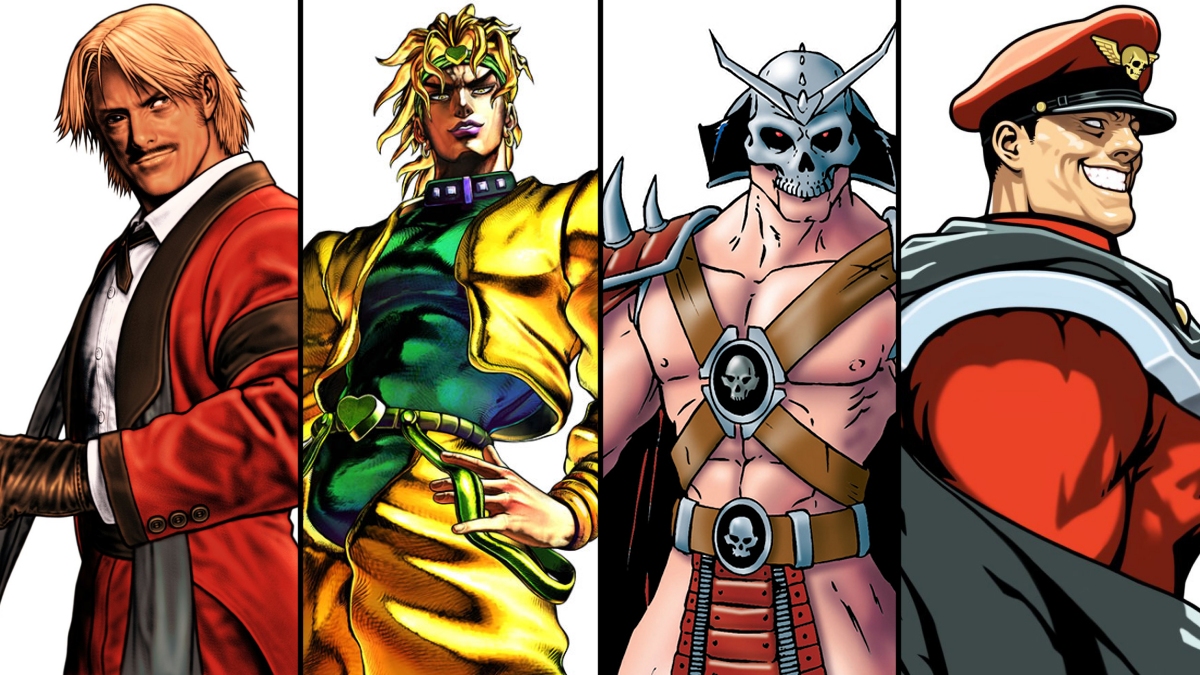When it isn’t about rage-quitting against your best buddy sitting next to you on the couch, or some guy playing against you across the country, fighting games are all about beating the arcade mode. Doing so means defeating the pesky final boss.
We’ve fought so many final bosses over the last 30+ years. Whether they’re godly megalomaniacs or bloodthirsty loners out to prove they’re the best, there are pleny of cheap-ass villains standing in the way of character-specific epilogue cutscenes.
So I’ve decided to rank the 50 best final bosses in fighting game history. This ranking includes both default final bosses and special secret bosses, but they have to be the last guy you fight. That means characters like Goro, Cervantes, Apocalypse, Vega, and Antonov don’t count. I’m also not counting games like Street Fighter Alpha and Vampire Savior where there’s no real set boss and different people have different final opponents, which is why Jedah isn’t on the list.
Now let’s face it straight!
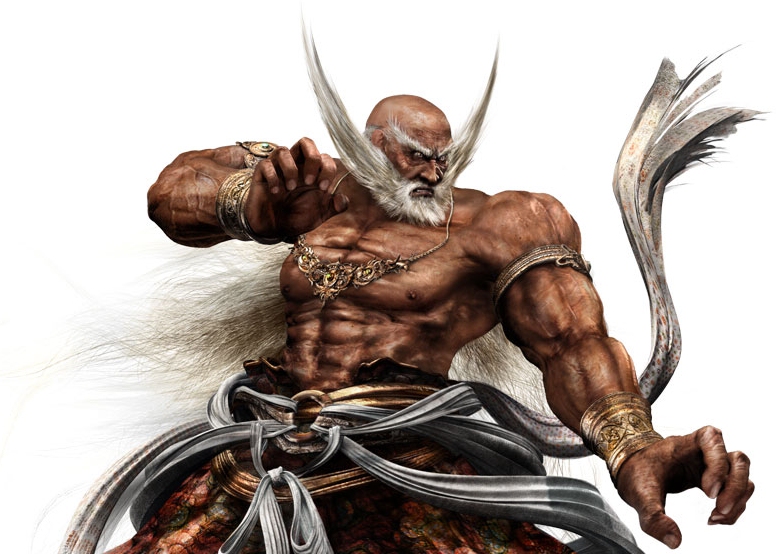
50. JINPACHI MISHIMA
Tekken 5
I think this is the moment when Tekken’s story started going off the rails. Don’t get me wrong, I still love the lore of the series, but after doing a game about Heihachi vs. Kazuya vs. Jin, they decided to go further and bring in Heihachi’s dad. And he’s possessed by a demon because why the hell not.
But really, the reason he’s possessed is because otherwise he’s the one member of the bloodline who isn’t a jerk. That doesn’t make for a good boss design. In Tekken 5, he takes over the Mishima Zaibatsu and sets up a new King of the Iron Fist tournament ASAP just so somebody strong might be able to kill him before he completely loses control and wipes out all life on the planet. His ending cutscene even has him cry blood over this because he’s that hardcore.
The tragedy is that, in the end, he was killed by his great-grandson Jin, but Jin came out of it learning the wrong lesson. Jin, suffering from his own possession problems, went and took over the Mishima Zaibatsu and started a world war as part of an elaborate plan to commit suicide by putting a giant target on his back. It took two more games for him to finally get his head on straight.
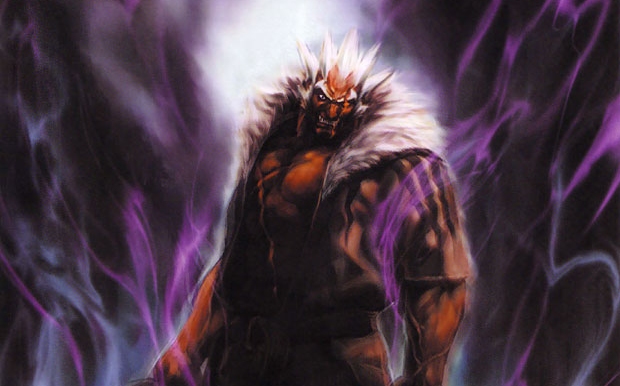
49. SILBER
Buriki One
SNK shamelessly ripped off Akuma, but at least the studio did it with style. Coming from the lesser-known fighter Buriki One, Silber is a Victor Creed-looking urban legend who is obsessed with increasing his power and challenging worthy opponents. At the end of the game’s big MMA tournament, when the player is ready to face his fellow finalist, your opponents’s busted carcass is instead knocked through the entranceway like a punted football. The mysterious Silber takes their spot.
Win or lose, Silber’s response is to just quietly jump off and exit the arena. The endings are mainly about the winners being asked by the press what the hell that was even about. And if you unlock Silber and beat the game with him, he just leaves the press hanging by jumping off into the distance.
Silber also appeared as a hidden mid-boss in King of Fighters XI, but his fighting style lacks anything really bombastic. No fireballs or energy explosions or anything like that. Just brutal karate with his flashiest move being a flipping legdrop.
I do really get a kick out of how one of his King of Fighters intros has him throw a non-descript martial artist to the ground before jumping into the fight, like it’s his regular thing to kick some schmuck’s ass and take their spot in a tournament.
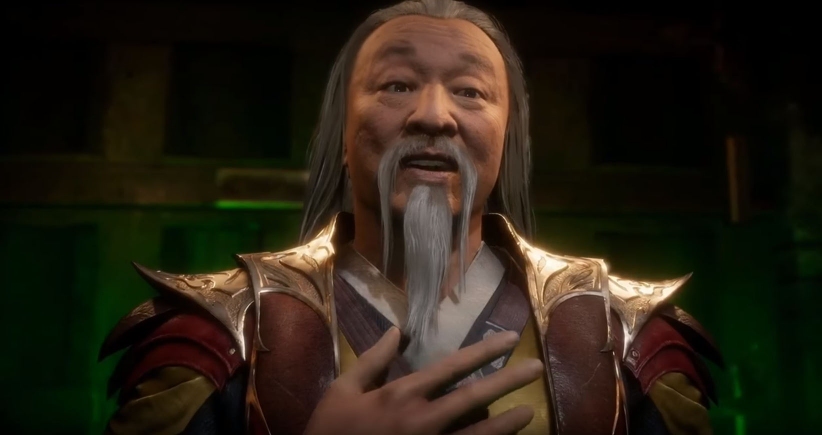
48. SHANG TSUNG
Mortal Kombat
Mortal Kombat’s attract mode sold the game by going, “Yo, check out this huge claymation beast with his four arms and topknot! He will break you in half if you even blink!” But this unstoppable monster was actually second to some floating geezer. Surely, that at least had to mean that Shang Tsung was a special kind of threat in his own way.
Indeed he was. A shape-shifter was a fantastic gimmick for a final boss, especially since it jibed with his tendency to eat souls. Even though he was turning into other playable characters, the insinuation was that you were more or less fighting all the dead warriors from the years that he had absorbed into his being. Then Cary-Hiroyuki Tagawa played the HELL out of him in the movie and his legendary status was solidified.
While lesser on the totem pole in later games, Shang Tsung regaining his youth made for a good trade. It’s just too bad that once games were on discs and had loading times, Shang’s tendency to morph mid-match took a powder. As one of the final bosses in Deadly Alliance, it just didn’t feel the same. He was just some guy.
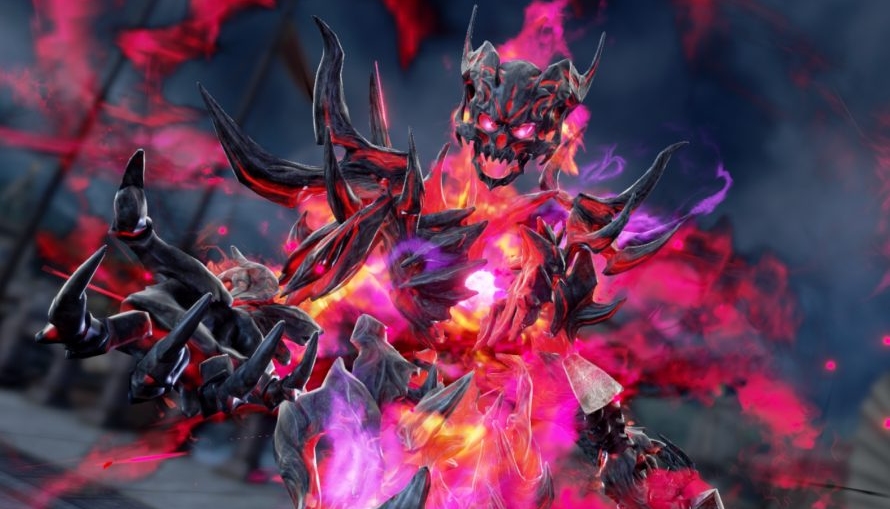
47. SOUL EDGE/INFERNO
The Soul Series
As far as I’m concerned, the Inferno concept peaked in the first game. Cervantes was an evil dude, but he was still just a pawn. As shown at the end of that fantastic CGI intro that still holds up to this day, the swords were really running the show. So after taking down Cervantes, the swords came to life to fight you as a more powerful version of Cervantes with a flaming skull head.
The development of Siegfried wielding the Soul Edge and being transformed into Nightmare was a wonderful twist and selling point for the sequel’s storyline, but it made Inferno look a little redundant. The flame body was neat, but he was just Nightmare with a weaker design. Inferno never really had a personality of its own. Then Bandai Namco started having Inferno adopt random movesets, but there are like a dozen characters like that in SoulCalibur.
The concept of Inferno did translate well in SoulCalibur V where they showed that the Soul Calibur sword has its own counterpart in Elysium. It appeared in the form of a scantily-clad Sophitia in order to manipulate Sophitia’s son, Patroklos. Man, Inferno may be evil personified, but at least it didn’t try to seduce Siegfried by turning into his dad in a speedo.
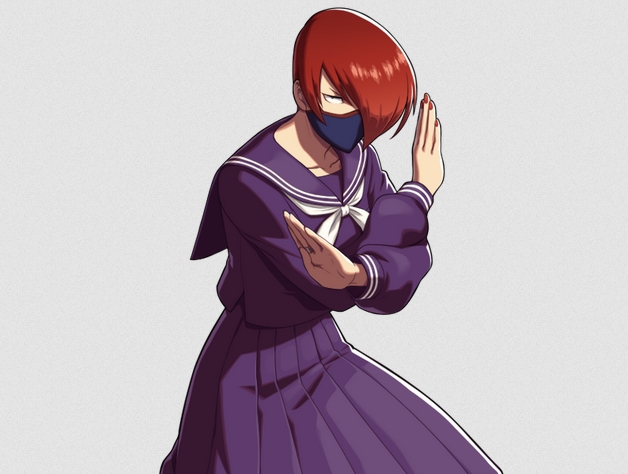
46. MISS X
SNK Gal Fighters
The Neo Geo Pocket Color game SNK Gal Fighters features an all-female roster in a comedic story about a mysterious Miss X putting together a Queen of Fighters tournament, with some kind of wish-granting talisman up for grabs. When you reach the end of the game, you discover that Miss X looks an awful lot like Iori Yagami wearing a mask and a dress. While many of her opponents aren’t fooled, nobody outright says Iori’s name, and Miss X insists she isn’t who they think.
But also, please don’t tell Kyo about this.
Of course, she still fights exactly like Iori Yagami and is flanked by Iori’s former King of Fighters partners Vice, Mature, Billy Kane, and Eiji Kisaragi. Miss X is REALLY committed to the act, but it’s never really explained why she’s created this whole disguise.
Miss X made a few more appearances too, including when Dimitri performs his Midnight Bliss attack on Iori in SNK vs. Capcom: Chaos and as a DLC character in SNK Heroines Tag Team Frenzy.
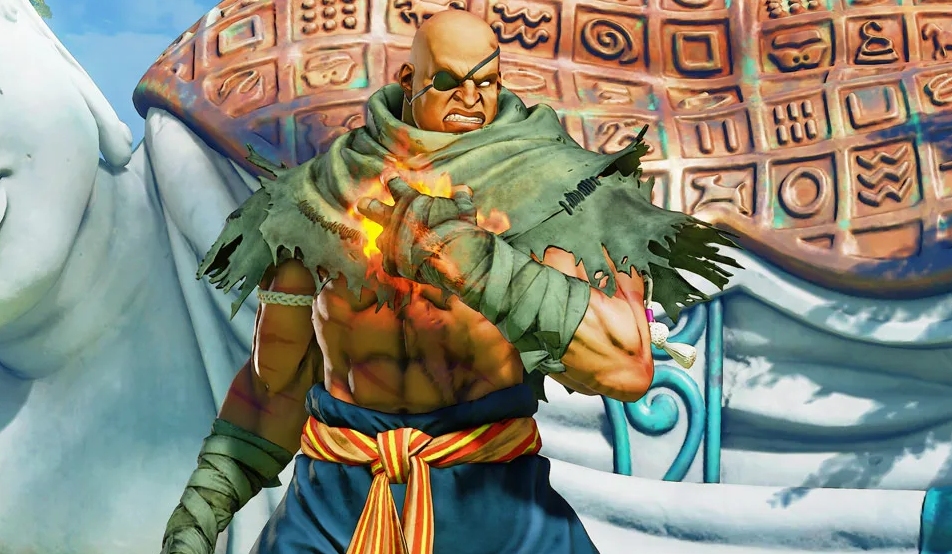
45. SAGAT
Street Fighter
As the boss of the first Street Fighter game – which nobody really cares about – Sagat being on this list is more of a courtesy. While a difficult opponent, Sagat’s position as a final boss isn’t really that memorable. If anything, he’s defined by his defeat here. It’s why he has that cool scar on his chest, why he suddenly has a Dragon Punch knockoff in the sequel, and it’s the crux for his redemption story and frenemy relationship with Ryu.
Sagat’s spot as the original Street Fighter boss actually helps build up M. Bison and Shadaloo in general. He returns in Street Fighter II, scarred both physically and mentally, while physically stronger and more driven. Yet he is still only the penultimate boss, showing that this time he’s outranked by a big-chinned dictator.
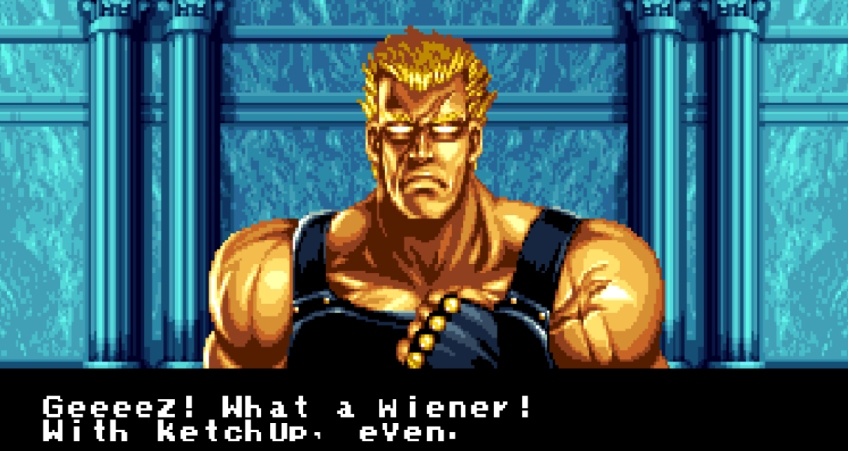
44. ZEUS
World Heroes 2 Jet
World Heroes 2 Jet doesn’t have any character-specific endings. Instead, the endings are based around Zeus, a jacked behemoth who watches your penultimate victory from a balcony, acts jazzed about finding a worthy opponent, then makes the grandest of entrances by flexing off his suit (revealing body armor underneath), walking down some stairs, and kicking the doors off the entranceway.
A regular old pain in the ass, Zeus’ reaction to his defeat is decided by how much health the player has left. If it’s a close match, he’ll berate you until realizing that it was a fun fight. If the player has half a life bar left, he’ll threaten to kill them the next time they meet. If the player has almost all of their health, Zeus will mope as his henchman Jack tries to cheer him up. He insults the player, then cartoonishly cheeses it across the image of a map.
What makes this so golden is the iffy English translations. Here are some of Zeus’ lines from his endings:
“Why you, you, YOU… YOU CRAZY FUNSTER! To think that you were this strong!”
“YOU FILTH, YOU SLIME, YOU LAWYER! To think you had such power… But, heh, heh, heh…it was a crazy, hip time!”
“Hey, you. Still can’t walk and chew bubblegum at the same time? Oh, nooooooo!”
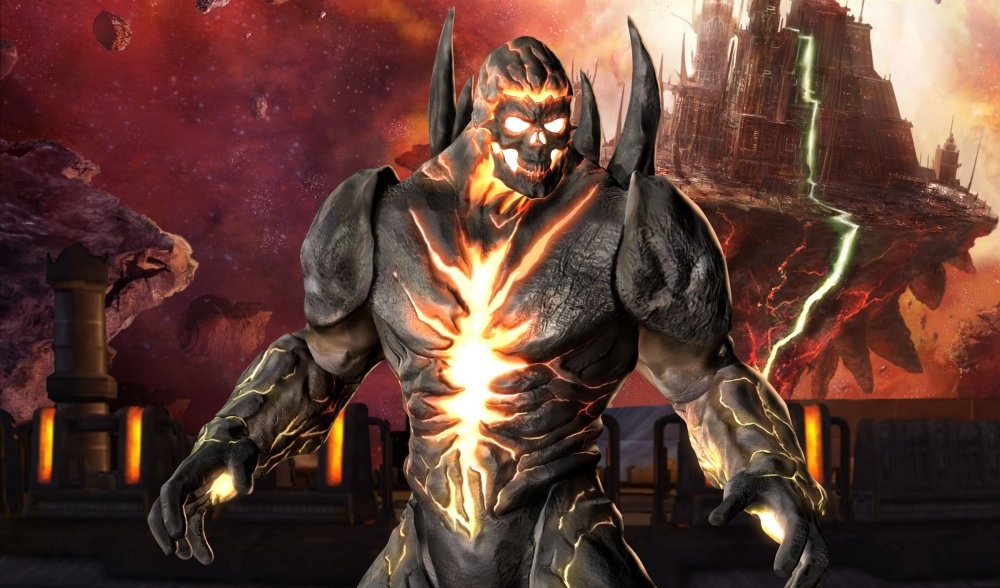
43. DARK KAHN
Mortal Kombat vs. DC Universe
Mortal Kombat vs. DC Universe felt like a joke someone made about Marvel vs. Capcom that someone else took as a serious suggestion. Quality of the game aside, the two worlds meshed well together, which is why we’ve seen the two parties meet up again a few more times. Mortal Kombat and DC, for the most part, didn’t so much match up as they complemented each other.
One pairing in particular matched up perfectly. Darkseid and Shao Kahn were both evil overlords, two peas in a pod. Rather than fight each other or team up, they did one better: they merged.
Dark Kahn isn’t exactly better than the individual characters but this modern Amalgam design still kicks ass. Darkseid’s stony flesh mixed with Shao Kahn’s skull face to create a lava beast who lives to blow up the multiverse.
Dark Kahn IS…OUTSTANDING.
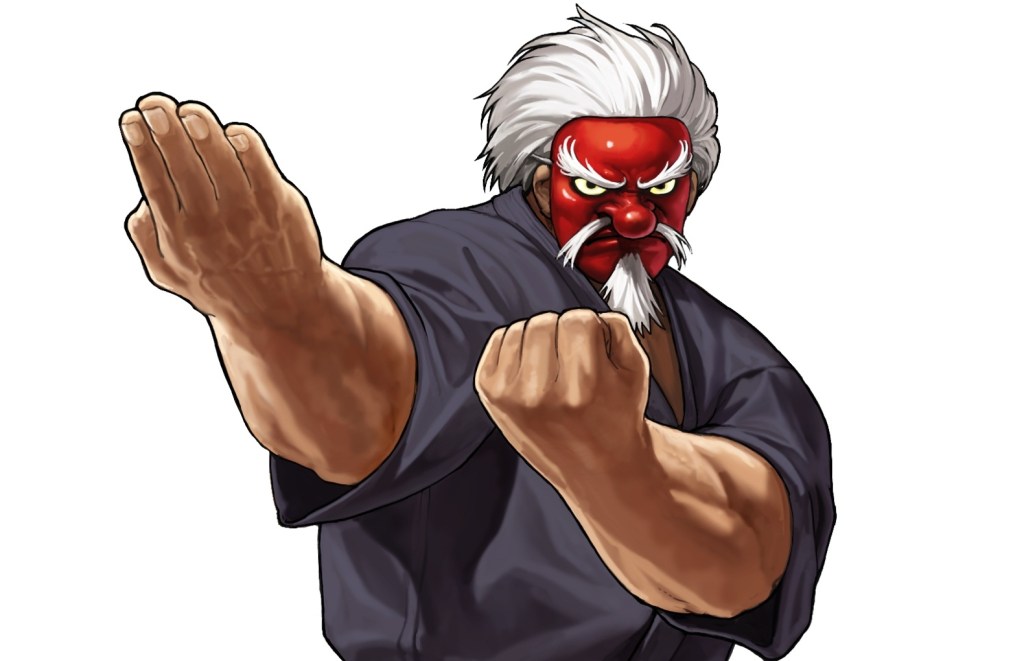
42. MISTER KARATE
Art of Fighting
Just because someone is designed as comic relief doesn’t mean they can’t have their moments of serious competence. See also: Deadpool, Mankind.
Mr. Karate started as the original Akuma type. In Art of Fighting, Mr. Karate was a mysterious mob enforcer who happened to look and fight just like protagonist Ryo Sakazaki, but with a different head and more damaging attacks. In another light, Mr. Karate’s tengu mask could be seen as silly, but considering how brutal he was, it was easy to see it as a threatening symbol of martial arts dominance.
After that game, where it was established that Mr. Karate was Ryo’s father, Takuma Sakazaki, who’d forced to work for the mob, he became a secondary character. He showed up in King of Fighters regularly as just Takuma, but became something of a joke. When he appeared in the Mr. Karate mask, he acted like a total goof and everyone rolled their eyes at his lack of self-awareness. But comedic or not, there were still moments here and there that made him look tougher than the rest of his family combined.
But it was SNK vs. Capcom: Chaos that revitalized him. Depicted as Akuma’s SNK counterpart, Mr. Karate was given both a silly base version and his “serious” boss alter-ego, who reminded the world of what kind of force he was in his Art of Fighting days. Right on.
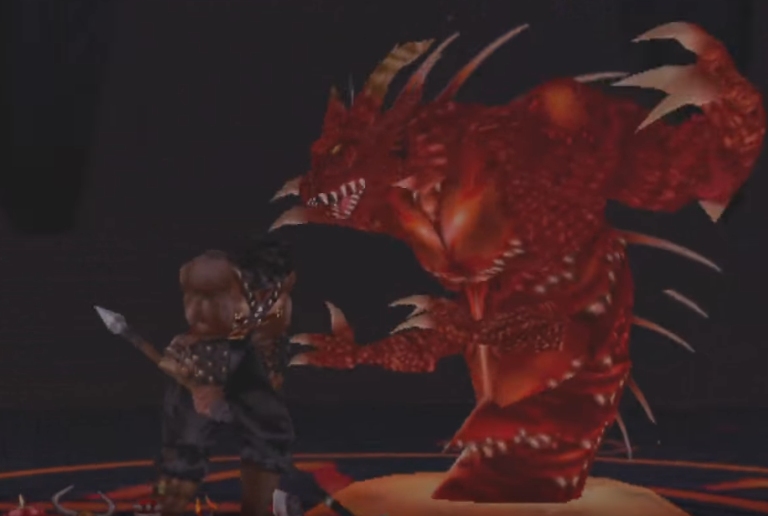
41. ASMODEUS
Mace: The Dark Age
The Nintendo 64 was lousy when it came to compiling a fighting game library, so we had to do the best with what we had. Mixed in the shallow pile was Mace: The Dark Age, which was like if the guys who made Mortal Kombat were tasked with making a SoulCalibur game. The basic story was roughly the same: an insidious, medieval weapon of ultimate power falls into the hands of evil and everyone wants a piece. The difference was that while the Soul Edge brought demonic chaos in its wake, with its wielders just wandering around destroying stuff, the Mace of Tanis brought demonic order, as its wielder used it to rule Eurasia and its corrupt council.
This created a conflict where everyone wanted a shot at holding the Mace. Not just the heroes, but also conniving members of the Council of Seven because they’re evil and power hungry. And wielding the Mace of Tanis? None other than Asmodeus. His name popped up in exposition dumps but he didn’t even have a pre-fight profile image. You didn’t get to see him until you actually faced him in the final battle and, all in all, he met the hype.
For all of the limitations of the Nintendo 64’s graphics, Asmodeus looked amazing. He appeared as a gigantic, reptilian demon so big that only his upper half was peaking out of a portal. His offense wasn’t much to talk about, as it was mostly just swiping attacks and pounding at his prey, but damn if he didn’t look like how a final boss should look.
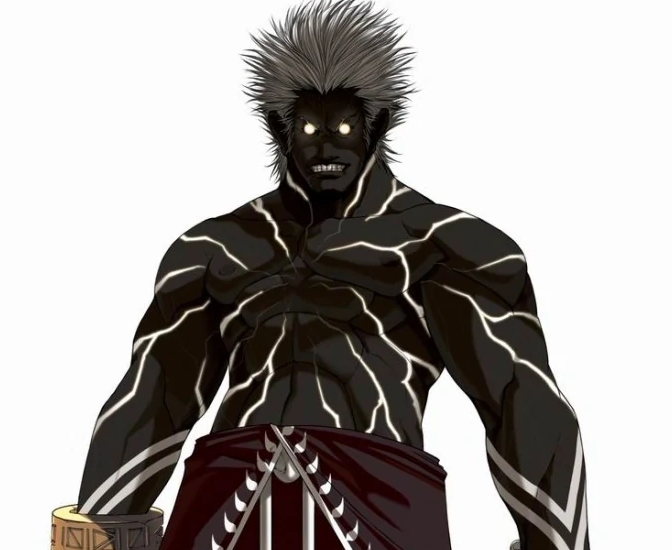
40. MUKAI
King of Fighters 2003
The 10th and 11th King of Fighters games released in the final days of the franchise’s classic art style, and included some great designs, like Oswald. But while the bosses in these games looked and moved exceptionally, they were mostly really lame otherwise.
Mukai from King of Fighters 2003 provided a great balance, though. He didn’t have much going on besides being the harbinger for lesser villains, but he looked totally sweet and his stone-based motif led to a fun boss fight that wasn’t too hard to figure out. Admittedly, I’m a sucker for the glowing lava design usually reserved for rock creatures, but making that classic design monochrome feels fresh and absolutely badass.
Too bad he died like a punk in a random cutscene several games later.
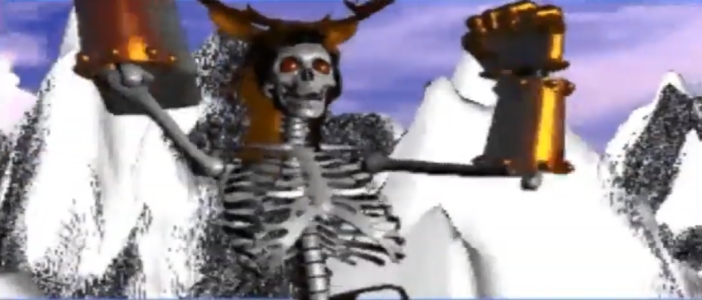
39. KULL THE DESPOILER
Way of the Warrior
It’s disappointing to me when a ridiculous and/or stupid fighting game doesn’t have that final boss that just pushes it further into hilarity. I’d love to discuss ClayFighter here, but it’s not like N. Boss or Dr. Kiln were anything to write home about. Tattoo Assassins is a total trip, but there’s not much to say about its big bad Koldan. Death from Time Killers is just lame and ugly to look at.
Way of the Warrior is an extreme piece of garbage and sweet Jesus does that translate to its final boss, Kull the Despoiler.
This 3DO classic is one of several Mortal Kombat knockoffs that tried to cash in on digitized graphics and bloody violence. Other features included a White Zombie soundtrack, hideous backgrounds, a character who just a regular guy’s sprite but enlarged to look like a giant, and a couple boss characters brought to life by mid-‘90s CGI.
After the player has gone through the main cast and a CGI dinosaur named High Abbott (with another CGI dinosaur watching from a throne in the background), we take a trip to the citadel graveyard stage. There’s a memorial statue of the great warrior Kull that suddenly breaks apart to reveal that his living, 8-foot-tall skeleton is inside.
“Not even death shall keep my name from the Book of Warriors!”
You must fight this silly skeleton warrior, who is armed with a bloody hammer and iffy voice-acting, all while the guy who made Devil’s Rejects is singing. A fitting finale for such a game.
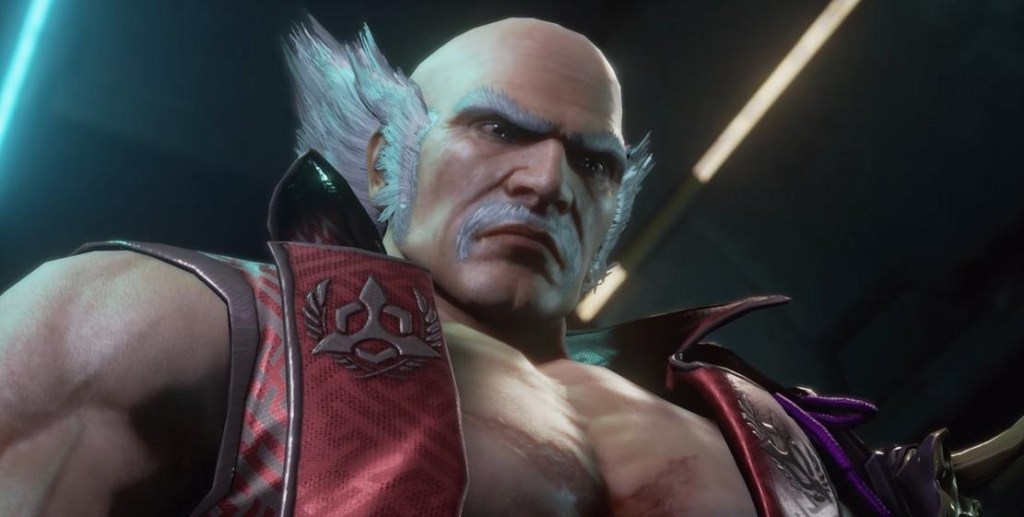
38. HEIHACHI MISHIMA
Tekken Series
In terms of pure power, Heihachi is one of the weakest boss characters in relation to his series. He’s played the final boss a few times in the Tekken series, but these fights are always less about him being the ultimate force of destructive evil and more about his importance to the story as a scheming bastard with the occasional redeemable moment as a human being.
It’s also about how he measures up to his son, Kazuya, the would-be protagonist who is ultimately more evil than Heihachi. The first game’s plot focuses on Kazuya as a vindictive monster who smiles at his father’s assumed murder, and Tekken 4 finally brings the three-way generational conflict between Heihachi, Kazuya, and Jin to a head for the first time. Then in Tekken 7’s story mode, Heihachi gets his final battle with Kazuya in a war that’s been ravaging the whole world.
Despite being hilariously unkillable in the past, Heihachi appears to be dead for real now and it’s solidified his true purpose as a final boss: to pass the torch to his son, who is both stronger and straight-up worse as a human being.
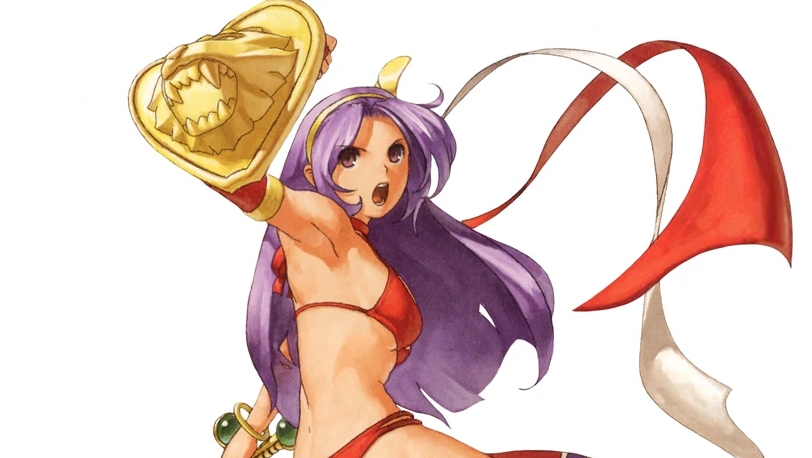
37. ATHENA
SNK vs. Capcom: Chaos
If there’s anything resembling a story in SNK vs. Capcom: Chaos (not counting the completely bonkers Hong Kong comic adaptation), it’s that all the street fighting going on in the world has caused havoc on time and space. Beings from the past and future have ended up in the present. By the end, it gets so out of control that by defeating Shin Akuma or Serious Mr. Karate, you create a rift that sends your character to Heaven or Hell.
(Let’s rock!)
If you’re in Hell, you fight Capcom representative Red Arremer from Ghosts ‘n’ Goblins. If you go to Heaven, it’s SNK’s Athena, but not the annoying pop star from the Psycho Soldiers team in King of Fighters. It’s the original SNK Athena from the sidescroller where she’s a bikini-clad goddess. Funny enough, despite there being pre-fight dialogue specific to each pairing, none of the King of Fighters crew pay any lip service to this.
Rather than annoying you with constant screams of, “PSYCHO BAAAWWWWW!!!” this Athena uses lots of summoning and shapeshifting powers to get the better of you. If King of Fighters Athena brought out a giant baby chick to destroy her opponents, I’d probably choose her more often.
If you lose the fight, she transforms you into an animal specific to the fighter. If you win, you get to meet God. Either way, it’s a pretty eventful day.
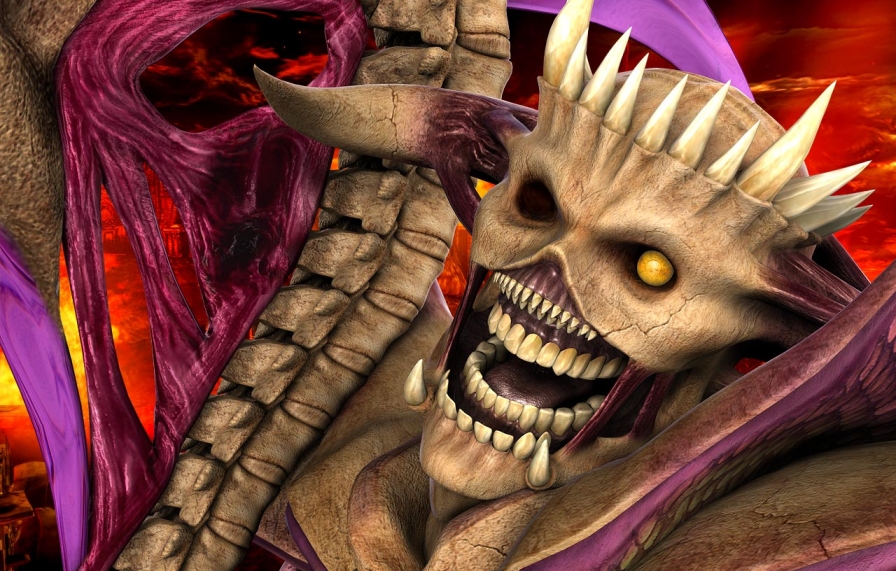
36. ABYSS
SoulCalibur III
I was thinking of putting Algol on this list before realizing that I have absolutely nothing to say about the guy. He was fine. Nothing especially memorable about him.
In terms of end bosses wielding both the Soul Edge and Soul Calibur, Zasalamel’s final form, Abyss, is where it’s at. Mainly because Zasalamel is one of the last great SoulCalibur characters (along with Grizzled Owl and Harley Quinn Gollum). He’s a fantastic neutral warrior who ironically uses a Grim Reaper scythe despite being cursed with immortality and wanting a permanent death.
Read more
After Zasalamel is transformed into Abyss, you actually begin rooting for Zasalamel to come through. This is his chance to put a stop to his endless cycle of resurrection, but it’s unfortunately turned him into an uncontrollable demon.
In the end, Zasalamel comes out of it better. During the experience, he sees a vision of the future (our present), and after reverting to his normal self, he goes from, “I must use the two swords to kill myself for good!” to “I have to prevent the two swords from ever killing me because the future looks fun as hell!”
Which reminds me, where’s my Zasalamel in Tekken, Harada?!
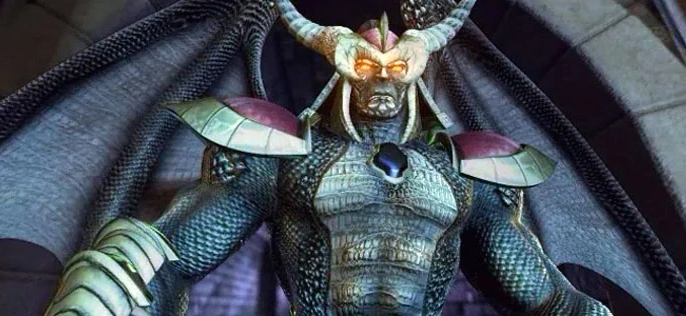
35. ONAGA THE DRAGON KING
Mortal Kombat: Deception
After Shinnok disappointed Mortal Kombat fans, Midway decided to introduce a new final boss who was a Shao Kahnier Shao Kahn. Fortunately, Onaga worked.
Mortal Kombat: Deadly Alliance made an effort to clean the slate and start fresh, removing Liu Kang, Shao Kahn, and Goro from the board. Having Shang Tsung and Quan Chi share the final boss spot went against that attempt for freshness, but Midway made up for it by planting the seeds for the sequel.
The whole plot was about introducing the Dragon King – the most Mortal Kombat villain name possible – who ruled Outworld before Shao Kahn. They built up anticipation through the game’s lore without showing him or even outright naming him, and we just knew the heroes were on a collision course with something monstrous. Reptile’s ending, in which his body was possessed and mutated by the Dragon King’s soul, made it definite.
Deception revealed that Shang Tsung and Quan Chi defeated the heroes, but it didn’t matter. Onaga was back and he made the two look like jokes. Things were already dire after the good guys lost, but now there was also this 10-foot-tall tank covered in scales with gigantic dragon wings just sauntering around.
Unfortunately, he got stuck being archenemies with Shujinko and that dude straight-up SUUUUUCKS!
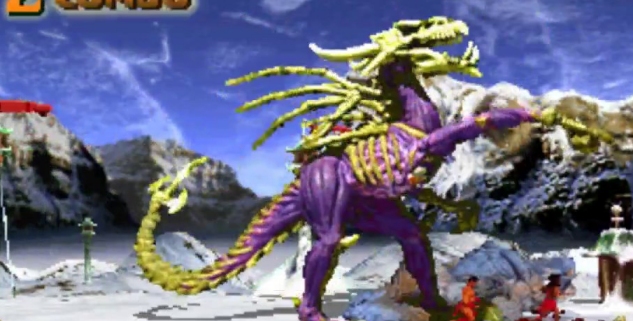
34. NECROSAN
Primal Rage 2
The holy trinity of almost-to-completely-finished fighting games that didn’t get released are Thrill Kill, Tattoo Assassins, and Primal Rage 2. Primal Rage 2 is a fascinating unreleased game that not only had action figures, but a novelization that I would love to read one of these days. It’s always crazy expensive on eBay, though.
The first Primal Rage didn’t have a final boss, but legend has it that Atari Games originally planned to introduce Necrosan in an updated version. Instead, the studio saved him for the sequel, and while the game never saw the light of day, he simply rules too much for me to ignore. Much like King Ghidorah, Necrosan is an alien invader in a world of Terran kaiju. An extremely well-animated winged dragon skeleton coated with muscle tissue, Necrosan looks metal as hell. His backstory complements his look too: he singlehandedly kicked the asses of all the beasts from the first game.
Also cool is the twist that the big meteor that caused the first game’s post-apocalyptic origin was actually an egg housing Necrosan who planned to conquer the planet for his race.
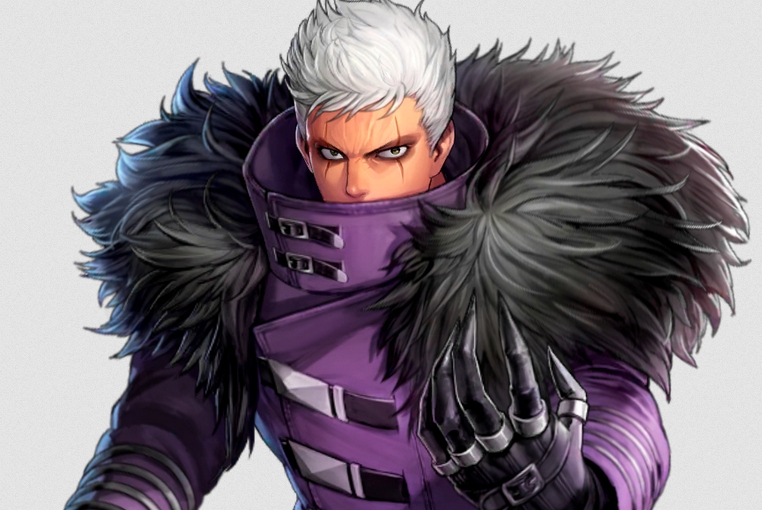
33. KRIZALID
King of Fighters ’99
After spending several years doing the Orochi storyline, King of Fighters finally moved on to something different: mad scientists. The NESTS Cartel was a neat idea in theory, but the further the story went, the more they revealed themselves as dorks. In other words, don’t expect to see Zero or Ignis on this list.
Krizalid had a great look…er, well, his first look. That coat with the fur top covering his jaw was great. The more flexible S&M garb from when he burns it away, not so much. He made for a great first threat in this new story, especially due to how the endings painted him as a tragic figure and made NESTS look like bigger dicks because of it.
For all his posturing, he’s just a deranged clone, pitied by the heroes and exterminated by his bosses at the first opportunity. Then again, maybe they were also annoyed that he got rid of the coat.
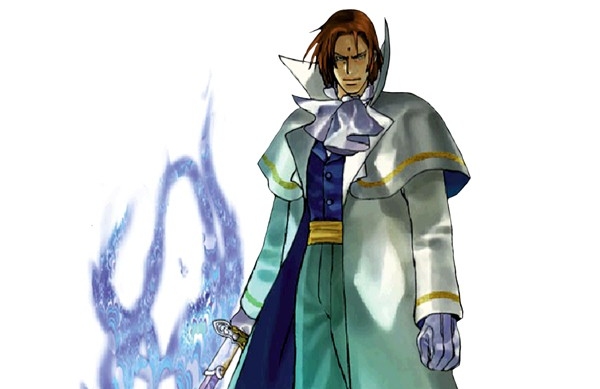
32. SHINNOSUKE KAGAMI
Last Blade
The Last Blade games are some of the most underrated titles in the SNK library. Despite only having two installments, the series features plenty of interesting moments, including a redemption arc for its initial villain, Kagami. Originally guard of a portal to evil and darkness, the high-and-mighty Kagami lost his faith in humanity and decided to use that portal to wipe out life on Earth and purge mankind completely. Using his refined swordsman skill and ability to wield flame, he killed a lot of people to help pull off his scheme.
In the end, he was defeated by the hero character Kaede and banished himself into the portal to be tormented. But was resurrected to fulfill his original role as guard of the portal as well as help take down Kouryu, a former victim of his whose reanimated body was possessed by evil from within the portal. This made Kagami second guess his role in the initial adventure, deciding that humans aren’t bound to evil after all and may even be good.
I always liked how he’d have a normal stance in the first round, but after taking a loss, he’d levitate half a foot off the ground. It’s just ominous enough without having to completely change his style.
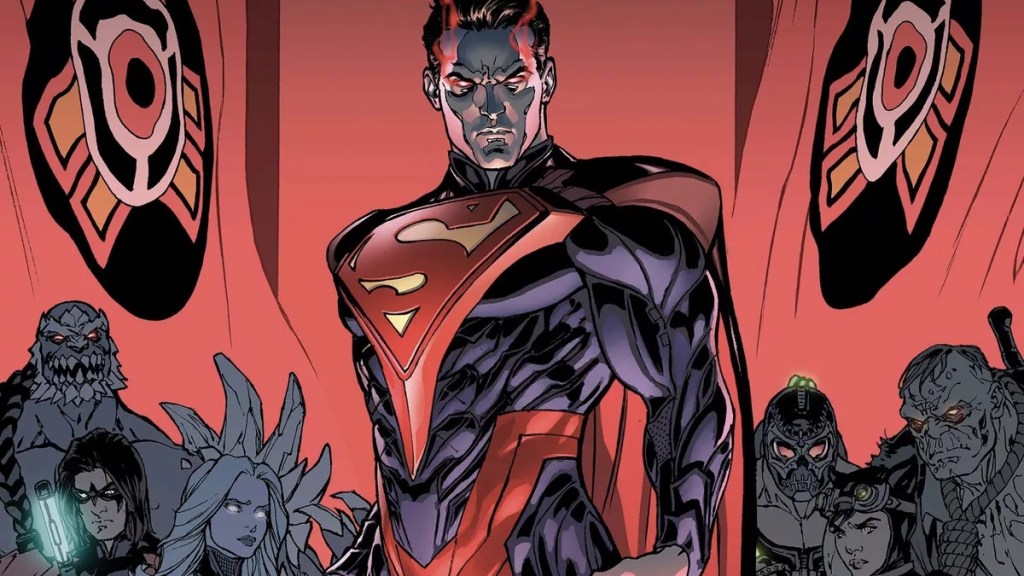
31. SUPERMAN
Injustice: Gods Among Us
“Evil Superman” has been done to death. It can be used well, but a lot of the time you just end up with Brightburn. Injustice: Gods Among Us did a decent enough job by taking an interesting episode of the Justice League cartoon and leaning harder into it. The main difference between the two Supermen was that, while the animated version was driven, he wasn’t as mentally cracked as his video game self.
The animated Superman still had Metropolis and Lois, but Injustice Superman lost them both at the hands of the Joker. As shown in the better-than-it-has-any-right-to-be comic book tie-in, Superman began his reign of terror by killing the Joker in a fit of anger, and bitterness, time, and betrayals caused him to become obsessed with order and a world where there was no war because he said so. It didn’t help that so many of his superfriends sided with him.
Superman is so regularly pushed as the top guy at DC that it’s not that surprising he’s the final boss in a DC fighting game. In fact, the only way to beat him was to get the good version of Superman to do the job.
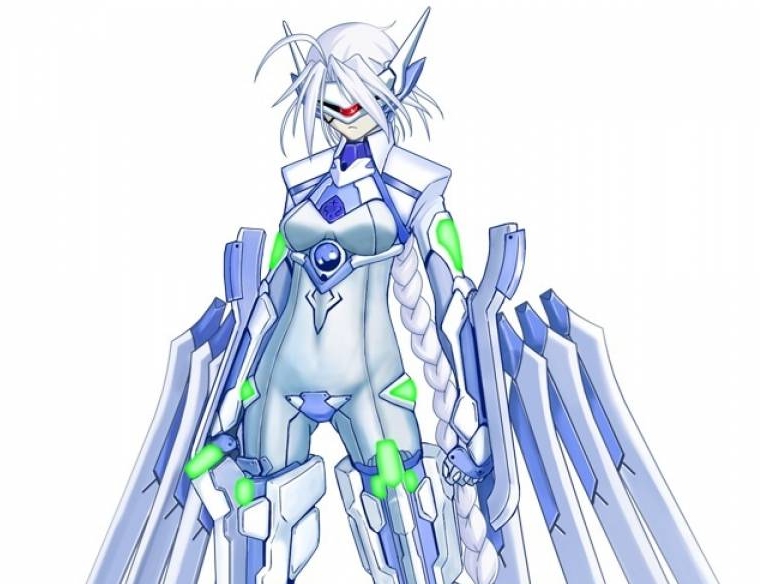
30. NU-13
BlazBlue: Calamity Trigger
When I played through BlazBlue: Calamity Trigger’s arcade mode, I made sure to use Ragna the Bloodedge last. The fact that he was the protagonist, yet very rarely appeared as an opponent for everyone else’s arcade mode path made him seem special. This ended up being the right way to play the game as his dialogue with Nu-13 hit me like a train.
BlazBlue’s plot of, “Wait, I think I understand, but… No, you lost me,” means I can’t fully explain what Nu-13’s story is but the gist of it is that she’s some kind of experiment gone wrong and she’s showing up around a portal that’s messing with the time-space continuum. Everyone comes across her in arcade mode and she usually greets them with extremely dry robot talk throughout the boss fight. When she meets with Ragna, she suddenly acts like an excited schoolgirl who has been pining for this guy and writing his initials in her diary. It’s extremely off-putting and unexpected.
As a boss, she’s a great fit for the game, which takes place about 200 years into the future, but Nu-13 is the only one truly diving headfirst into the futuristic look. Even the game’s resident cyborg Tager comes off lacking compared to all the crazy sci-fi shit Nu-13 has going for her.
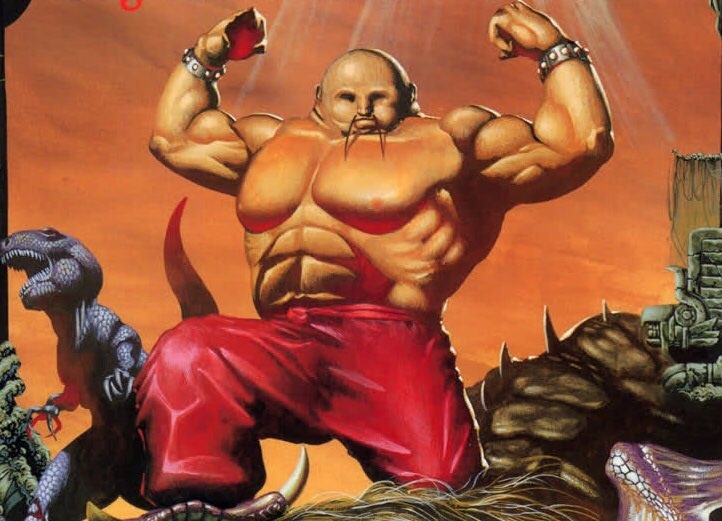
29. KARNOV
Fighter’s History Series
There is a holy trinity of ’80s video game asskickers who are remembered fondly due to a mix of genuine nostalgia and internet irony: Abobo, Mike Haggar, and Karnov. The latter fighter is a fascinating bloke. Not only did he star in his self-titled platformer game, but developer Data East also decided that this dadbod adventurer should just show up in several of their games like a mascot. This is why Fighter’s History is treated as a sequel to the original Karnov game in which the bored treasure hunter holds a fighting tournament with lots of his money on the line.
Fighter’s History is such an obvious Street Fighter II clone that Capcom tried suing Data East. The game’s only real saving grace is the use of Karnov as the carrot to lead you to the end. And while the sequel/update of the game is just the same cast with the bosses playable, Karnov looks completely different. In the first game, he’s completely jacked, albeit extremely short. In the next game, he’s taller and fat with a nasty stomach scar and has moves that allow him to morph his body like Jake from Adventure Time.
I suppose if it wasn’t weird, it wouldn’t be Karnov.
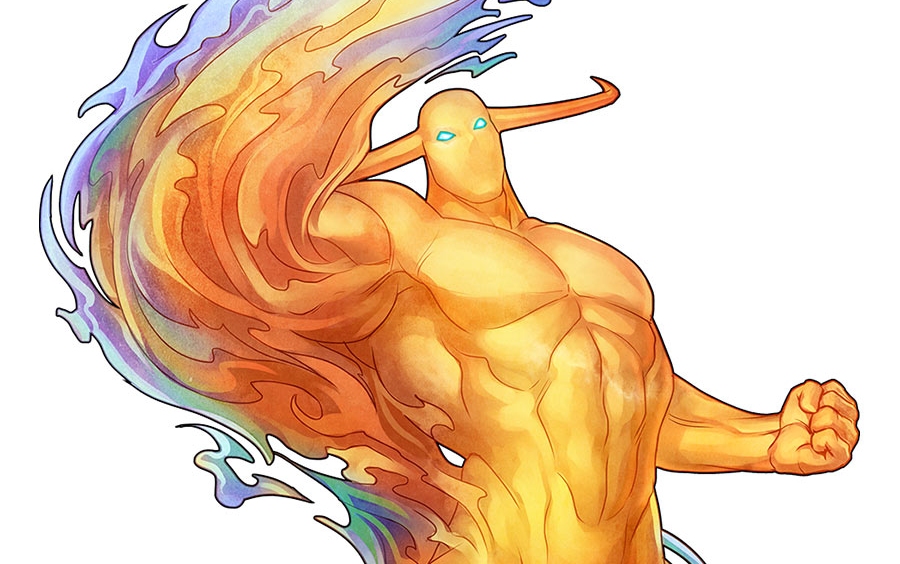
28. PYRON
Darkstalkers Series
When the gimmick of your game is that all your characters are Japanese takes on classic monsters, it’s only logical that the biggest threat is extraterrestrial. Pyron is far from the best alien in a video game, but he does the job here as both Silver Surfer and Galactus wrapped in one.
Seriously, look at his ending. If he can turn as big as the sun, he probably could have saved time by leading with that. But what do I know? I’m just a human who hasn’t been murdered by a vampire with stupid hair.
Pyron gets by with his design, which looks absolutely beautiful in that mid-‘90s Capcom arcade animation. The rippling energy waves of cosmic flame almost make you forgive him for what he was like on that terrible Saturday morning cartoon show.
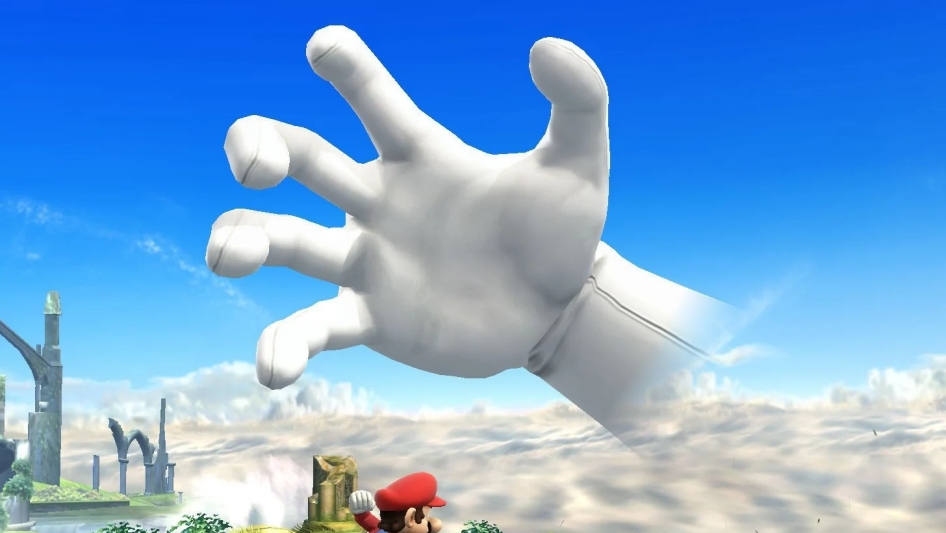
27. MASTER HAND
Super Smash Bros. Series
Chucking a bunch of Nintendo icons into a game and trying to make a narrative out of it is a fool’s errand. Luckily, Nintendo didn’t overthink it too much and just decided, “They’re figurines or something having an imaginary battle.” It’s Lego Movie meets Secret Wars.
And after so many dream fights like Mario vs. Link and Kirby vs. Yoshi, who would be at the top of the ladder to threaten the heroes? Bowser? Ganon? Andross? King Slender?
No. It’s a hand. Just a big, disembodied glove dead set on crushing the player. I suppose Nintendo didn’t need to have a recognizable final foe. The four-way Nintendo slugfest was enough. So why not have a big hand that can do silly big hand attacks? It’s just the bizarro icing on the cake at this point.
I love how random Master Hand is. It’s a boss fight version of the Toy Story toys revolting against Sid the bully. With every new game, Nintendo had tried to add needless context, and this has caused Master Hand to expand into transcendent final boss concepts like Crazy Hand and Tabuu. That’s just a special kind of weird. Imagine creating a giant hand as your villain and then in each sequel thinking to yourself, “How do we build on that?”
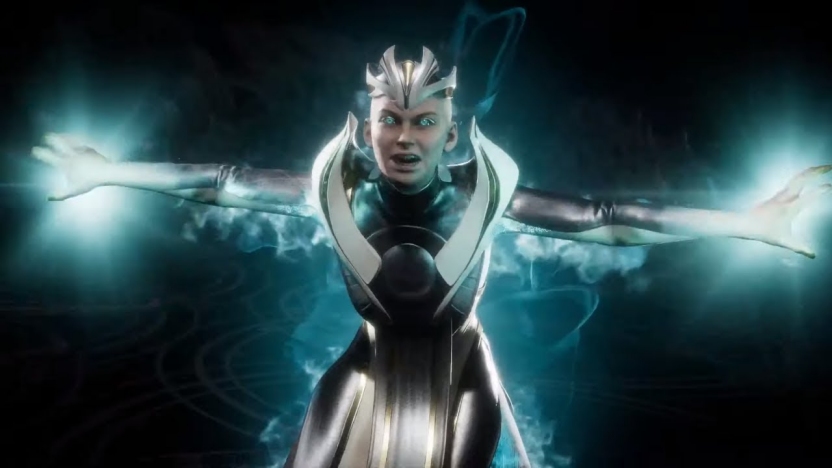
26. KRONIKA
Mortal Kombat 11
Despite rebooting the series’ winding and convoluted storyline, Mortal Kombat 9 ended on a low note. Sure, Shao Kahn was dead, but so were most of the heroes just as Shinnok was preparing to make his own move. Meanwhile, Mortal Kombat X, while not having the happiest ending, culminated with most of the major threats taken off the board. Kahn was still dead, Quan Chi was dead, Shinnok was just a head, and Onaga’s resurrection was prevented. Things were looking up for once!
But in Moral Kombat 11, a cosmic Tilda Swinton appeared as not just Shinnok’s mother, but as a meta representation of video game designers at odds with the story. Kronika wants good and evil to war with each other on equal enough footing forever. The status quo doesn’t allow enough juice for what she wants, so her plans include bringing back dead characters with a hand wave, reverting characters who have developed farther than she cares for, and even rebooting the franchise itself.
Even her kind, the Titans (higher up on the chain than the Elder Gods), play into this. Scorpion’s ending shows that reality simply won’t exist without the backstory that his wife and child were killed, all because the Titans deemed it so. These games are getting dangerously close to the fourth wall.
Meta or not, Kronika is a fantastic addition to the Mortal Kombat mythos. That endless time-reverse Fatality of hers is one of the highlights of that game’s many kills.
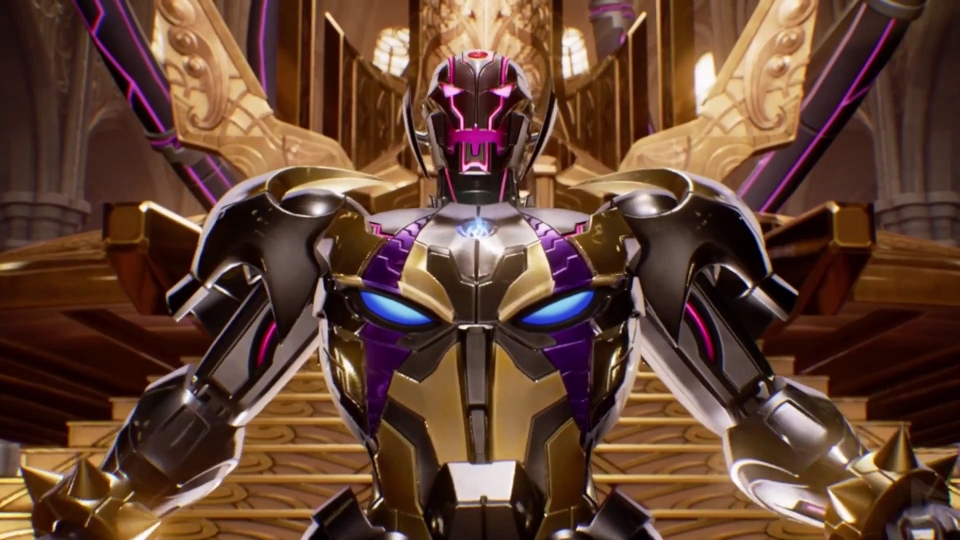
25. ULTRON SIGMA
Marvel vs. Capcom: Infinite
Despite its huge roster, Marvel vs. Capcom 3 didn’t have much in terms of Capcom-based villains. Plus, the big boss was Galactus. Where do you even go from Galactus in a sequel? For Marvel vs. Capcom: Infinite, bringing Galactus back was a no-no due to Disney being stingy with the Fantastic Four property at the time.
But Capcom had a pretty good solution. First, introduce Sigma from Mega Man X into the world of fighters. Second, bring in box office superstar (at the time) Ultron. Third, take a page out of Dark Kahn’s book and merge the two into one being. They’re robots. Robots love that shit.
For the record, the most hyped I got for this game was the stinger on the announcement trailer where they showed a shadowy Ultron sitting on a throne with Sigma’s glowing eyes appearing on his torso.
Not only do you get each meatbag-hating robot on their own and in merged form, but then there’s the over-the-top design of their final form. Transforming into a nightmarish and gaudy final form is Sigma’s MO, so it’s nice to see Ultron just go with it.
Yeah, Marvel vs. Capcom: Infinite didn’t have staying power, but it did have a giant Sigma head with Ultron’s body sticking out…as well as that head-scratching plot point where Thanos made a gauntlet powered by Ryu’s inner evil for the sake of throwing fireballs at Death. See, that’s why you need arcade mode endings in games like these. Let your crossover freak flag fly.
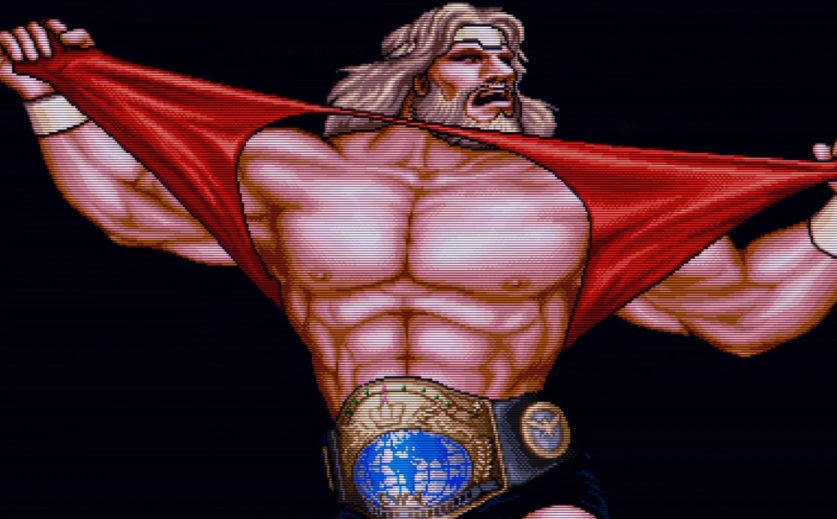
24. VICTOR ORTEGA
Ring of Destruction
Saturday Night Slam Masters is remembered well enough, partially due to its SNES port, but few talk about its sequel Ring of Destruction, which had more of an emphasis on fighting game mechanics. Players of only the first game would still recognize Victor Ortega, as he’s the Billy Graham/Hulk Hogan guy in the intro, tearing his shirt off. Though not part of the game’s roster, his identity is revealed if you’re able to beat the game without losing a single match.
This mountain of muscle was a previous CWA champion who was so dominant in the ring that he left out of boredom. Getting the first game’s best ending has Ortega return to challenge your wrestler, ending in a cliffhanger.
The sequel is about the Capcom Wrestling Association being invaded by heels representing the Blood Wrestling Association. This situation piques Ortega’s interest, as hewants the last man standing to challenge him for the title. He proves to be a pain in the ass to take on — not only can he uppercut so hard that fireballs fly out but he was busting out jumping Yoshi Tonics all the way back in 1994!
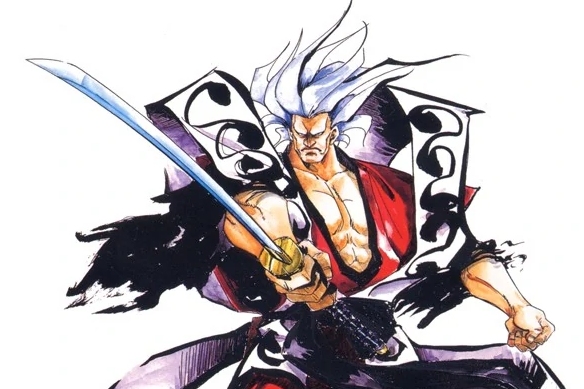
23. ZANKURO MINAZUKI
Samurai Shodown Series
In fighting games, having a katana means getting some extra range and damage. In a series like Samurai Shodown, what does one do for an extra range advantage when everyone is armed with a sword? Easy. Create an 8-foot-tall Brock Samson samurai guy with a katana befitting of his size.
Zankuro is one of the rare examples of a character who talks about “the demon within” but isn’t actually possessed by one. Ryu is a good person despite having a magical dark force inside him threatening to turn him into a rage zombie. Zankuro is just an asshole. He slaughtered villages of people because killing people is his vice. And really, who’s got the skill to get in his way and tell him to stop?
But the outcome is inevitable. He has to die. In Samurai Shodown III, Zankuro had a fake-out death followed by a real death, just as he lamented his horrible acts. He was be sorry about his sins, but sidestepped having to live with them.
Except…he keeps getting resurrected.
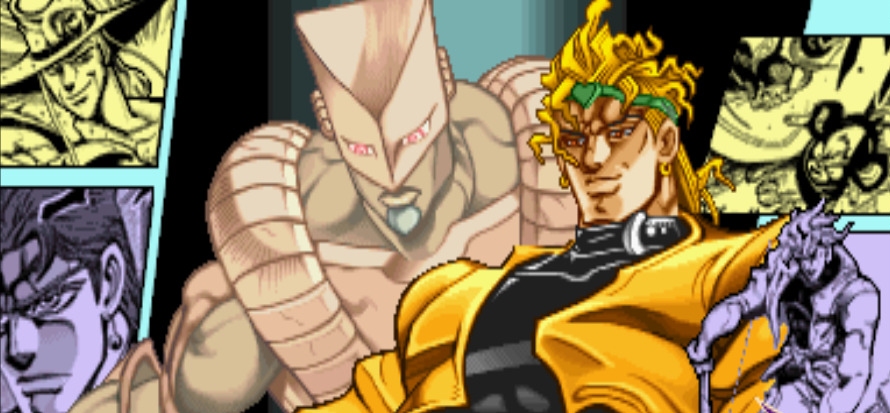
22. DIO BRANDO
Jojo’s Bizarre Adventure
It’s kind of crazy how popular Jojo’s Bizarre Adventure has become in the US in the past few years, especially when you look back at how niche it was in the late ‘90s when Capcom’s Jojo fighter hit the arcade, Dreamcast, and PlayStation. Back then, the best you could do was find some low-quality manga scans and hope that someone online could translate them. All Capcom had was the manga and a few episodes of an anime, but they still managed to turn those into a kickass video game adaptation.
Dio was a major part of this. His moves and animation set him up as someone who could be cold and collected one moment and a slinking psychopath the next. The way he’d jump off-screen, return with a steamroller, and smash you with it while laughingly clawing at the vehicle defined what kind of series-carrying villain he really was.
The biggest mark against him is that regular boss Dio is not nearly as cool as his faceless counterpart Shadow Dio, based on the stretch of the manga when nobody knew what Dio’s powers actually were but understood that he was scary as hell.
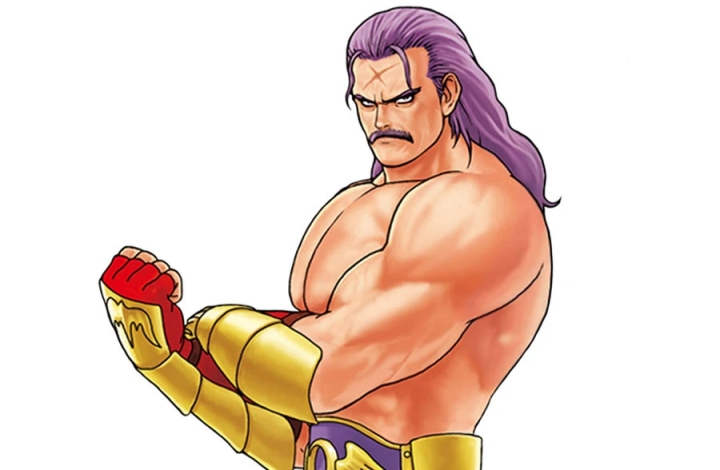
21. WOLFGANG KRAUSER
Fatal Fury Series
SNK did Krauser dirty. His appearances in Fatal Fury 2 and Fatal Fury Special made him the most epic boss fight of the era. First off, the dude was so jacked that he was able to burst out of his chest armor with a mere flex. Second, he got this epic line:“I’ll chisel your gravestone! Sleep well!” Most importantly, his background music was only a version of “Dies Irae” but it was played by own personal orchestra during that fight!
Dude wasn’t even up to no good. He was just an intense man who wanted a good fight. Even in defeat, he stood back up to dramatically yell, “You were perfect! I have met…my match…” before collapsing. Legendary presentation.
Unfortunately, then we got the second Fatal Fury anime, where SNK inexplicably got rid of Krauser’s amazing purple mustache. Why would you do such a thing? That mustache never did anything wrong.
He was almost completely forgotten by the time King of Fighters rolled around. He appeared in King of Fighters ’96 with a lanky redesign that made it look like he had a swimmer build, but everyone knows that Krauser needs to look like 2003 Triple H.
Oh, well. At least they didn’t get Ray Park to play him in a movie.
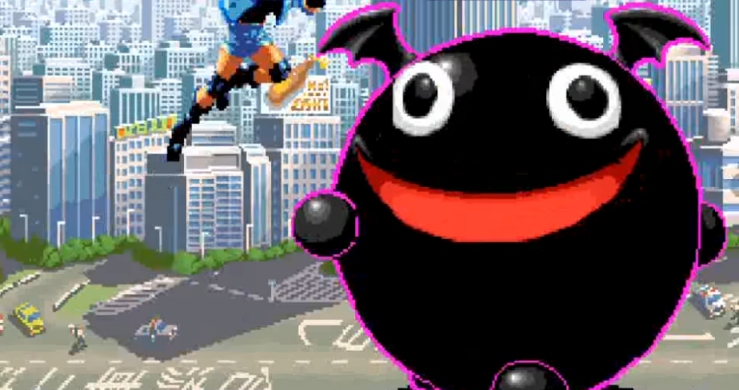
20. FERNANDEZ
Waku Waku 7
Waku Waku 7 is one of the liveliest and enjoyable fighting games that nobody has ever heard of. With one installment to its name, this Sunsoft creation has a handful of anime archetypes and knockoffs fight to free a magical fairy and earn a wish. In order to release the fairy, they have to grow into a giant and take on the kaiju known as Fernandez.
Known as Fernandeath in Japan, Fernandez is a large, black ball with a smiley face, bat wings, ball-shaped limbs, and a glowing aura. The giggling beast seems cute at first, but the more time you spend with it, the creepier and more malevolent it becomes. Its eyes turn red, it sometimes has pointy teeth, and at times it’ll turn full-on demonic.
There are some silly move animations thrown in there, but getting devoured and then shot out of its butt like a cannon can’t be the most enjoyable experience out there.
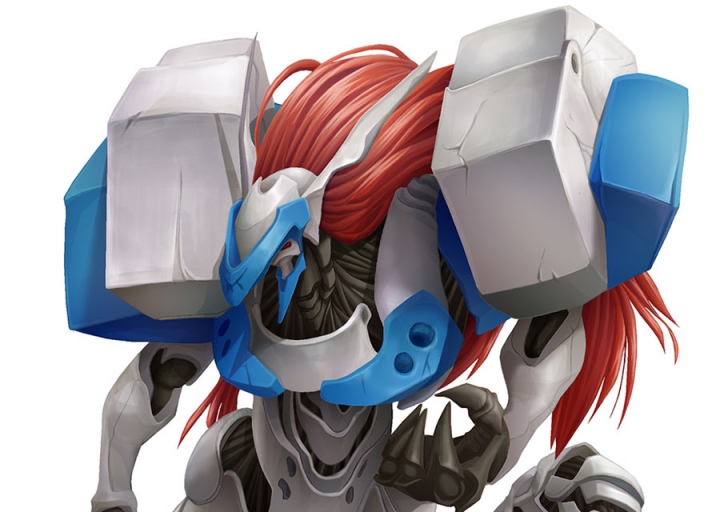
19. JUSTICE
Guilty Gear
Guilty Gear gets a lot of flack for its confusing plot and ridiculous titles, but the gist of the story is unique and surprisingly simple: Once upon a time, humanity took part in a devastating war called the Crusades, where they fought against robo-mutants (a cross between SkyNet and the Age of Apocalypse) and barely survived. Now, with the world reaching borderline utopia, it’s constantly threatened by the possibility of going back to the bad old days. In other words, we missed out on seeing the exciting, explosive, action-packed era of this fictional world, but we absolutely have to prevent that from happening again.
Adding to the terror is that Justice was never fully destroyed in that war. She was simply sealed away for all eternity, which never lasts in fiction. In the first Guilty Gear, losing to this lizard mech meant endless death and destruction. But through her defeat at the hands of Sol Badguy, we not only got a tragic origin story for our main hero that explained what the hell a “Guilty Gear” is, but Justice opened up this world to the possibility that the Crusades could return in various ways despite her death.
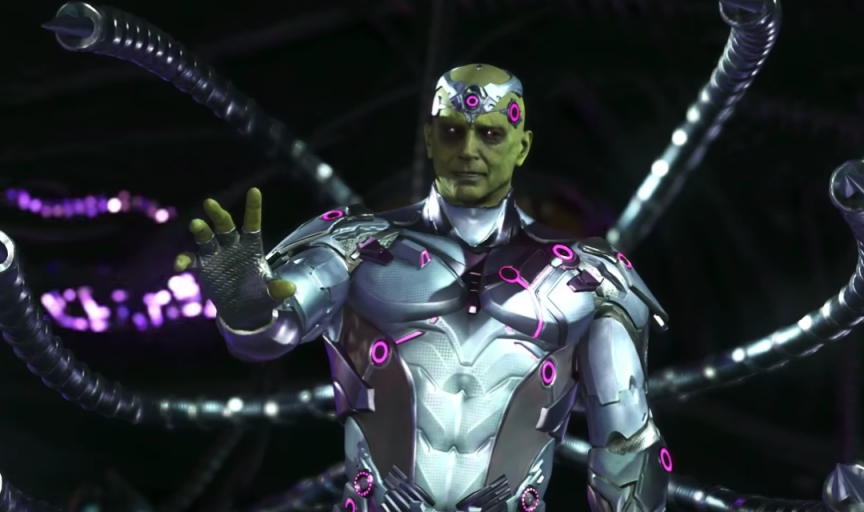
18. BRAINIAC
Injustice 2
When your first game is all about Batman taking down an evil Superman, where do you go for the sequel? Easy. You figure out a threat so huge that both Batman and Superman have to put their feud on hold in order to save Earth. The logical choice is Darkseid, but NetherRealm went in a smarter direction with Brainiac. Even though he’s an established character in other continuities, Brainiac had yet to show up in any form in Injustice canon, so the studio could treat him as a brand new threat.
He was the perfect fit, too. Since he was the one responsible for blowing up Krypton, the game used this backstory to also introduce Supergirl and gave us a villain that Superman would hate just as much as the Joker. Even in defeat, Brainiac’s plan created another violent moral argument between Batman and the murderous Superman.
Above all else, Brainiac felt like a big deal. His moves during the boss fight made him seem like an even more advanced take on Doc Ock. The inside of his space ship added to his cyber nightmare aesthetic, too. Last but not least, he was voiced by Jeffrey Combs, whose chilling delivery made him sound like the most menacing threat in the universe.
Sorry, Darkseid.
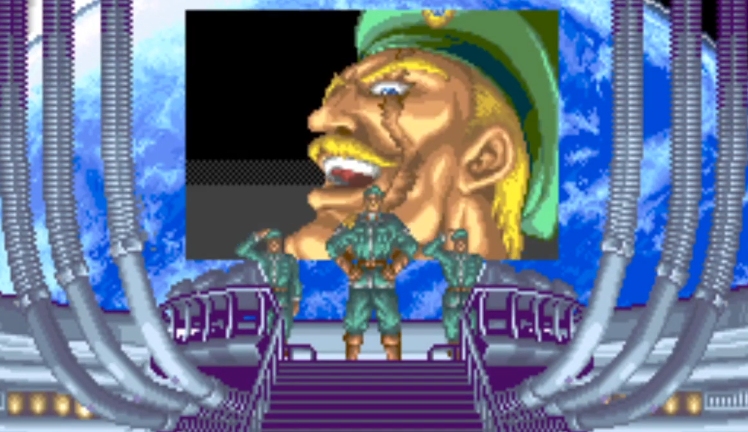
17. THE GENERAL
Kaiser Knuckle
Kaiser Knuckle is your average Street Fighter II knockoff from the early days of fighting games, and there’s only one reason anyone remembers it at all. That reason is the General.
At first glance, he’s little more than a blatant ripoff of M. Bison. Then you fight him. Without a doubt, the General is the absolute hardest boss in fighting game history. He’s unbelievable. Not only are his attacks unfair variations of Bison’s offense, but he has a move where he releases Green Lantern construct projections of himself in various directions.
He’s an afront to God and when he wins the round and calls himself a perfect soldier, it’s hard to argue.
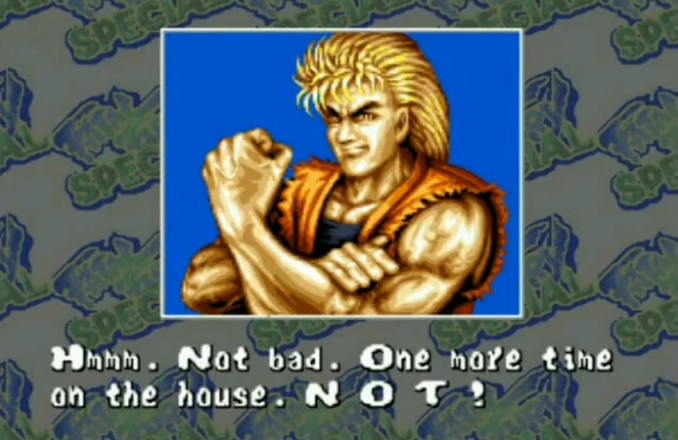
16. RYO SAKAZAKI
Fatal Fury Special
Some time after Mortal Kombat gave us Reptile and mere months before Street Fighter gave us Akuma, Fatal Fury Special introduced a very special hidden boss: Ryo Sakazaki. Sure, King of Fighters ’94 would be released within a year, but this was our first time seeing a major SNK fighting game crossover. This was the first Terry vs. Ryo matchup.
One of the reasons this debut hits so hard for me is that Ryo and the Art of Fighting crew never seemed to be too prominent in the King of Fighters games. There are two main continuities when it comes to SNK’s fighters. King of Fighters puts everything together and says it all coexists in the same era. Meanwhile, Art of Fighting, Fatal Fury, Buriki One, and Savage Reign are on a staggered timeline. With Art of Fighting taking place in the ‘70s, it means that the Ryo in Fatal Fury games and Buriki One is a hardened, middle-aged legend and not just another young upstart like he is in King of Fighters.
In other words, Ryo showing up in Fatal Fury Special isn’t just an early crossover, but a passing of the torch.
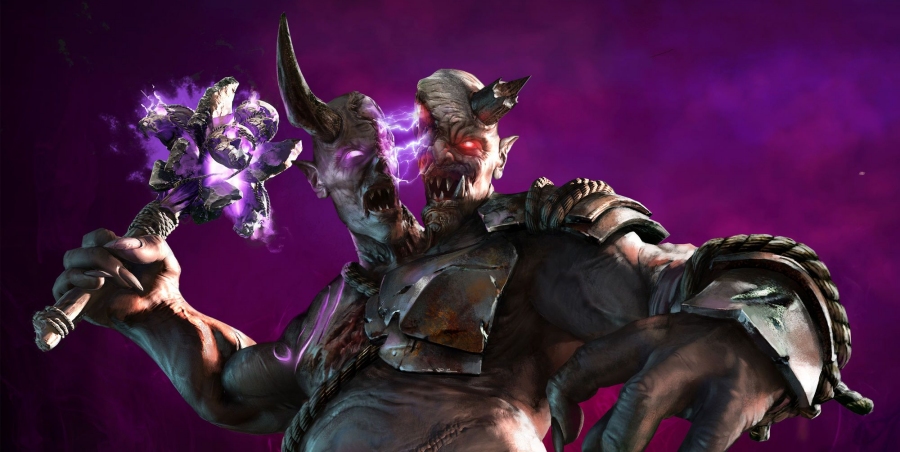
15. EYEDOL
Killer Instinct
Killer Instinct always valued character designs first and everything after. Ninja, robot, dinosaur, T&A secret agent, boxer, Native American, skeleton, werewolf, ice creature, and fire guy. Then came the story.
To that effect, Eyedol, much like Spinal, is a tribute to the stop-motion fantasy movie monsters of the old days. Specifically, he’s a two-headed version of the cyclops from the 7th Voyage of Sinbad. He made for a memorable final battle, thanks in part to the cheap-ass healing ability that he’d spam while the other fighter recovered in between rounds.
Eyedol was the last classic character released for the Killer Instinct reboot, and they redesigned the HELL out of him. Depicted as a holy chosen champion turned demonic and ogre-like due to his own ego, Eyedol’s two-headed cyclops look was explained as the result of having his head cleaved in half down the middle, then being resurrected. The wound is healed, but not undone, resulting in some gnarly body horror.
Much respect to his old ending, which was not only a parody of Blanka’s Street Fighter II ending, but by having his would-be mother refer to him as “Billy,” it becomes both a sly reference to Double Dragon (Billy and Jimmy) and musician Billy Idol.
Get it?
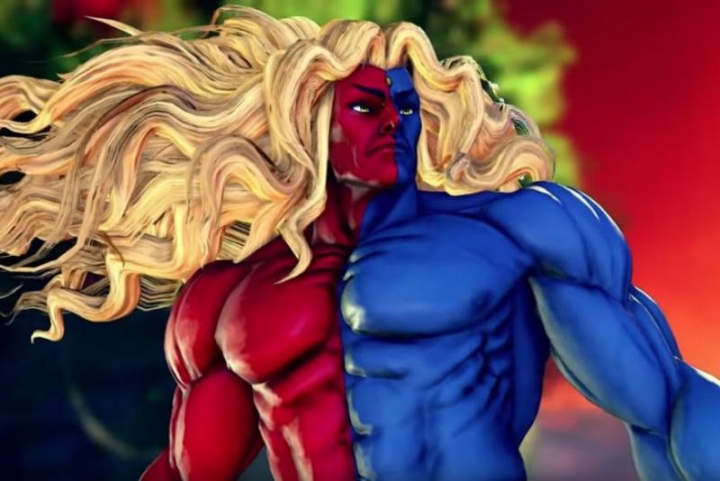
14. GILL
Street Fighter III
Following up on M. Bison was never going to be easy. For a long time, he was the poster boy for fighting game final bosses. For the third major installment, Capcom needed to introduce someone who felt different but also as big a threat as his predecessor. Rather than introducing “M. Bison’s boss” or “M. Bison’s dad,” the studio instead went in a completely original direction with Gill. Was he powerful? Yes. Did he use street fighting tournaments as a front for some kind of maniacal scheme? Yes again. Was he the ultimate evil? Well…I guess that depends on your thoughts on organized religion.
Rather than a villain delusional enough to call himself a god, Gill might as well BE a god. And he both wants to be virtuous, but he’s also an egomaniac about it. It’s definitely a fresh take on the mustache-twirling monsters in these games. Even Alex, the main character of Street Fighter III, only wants to fight him to get revenge after for his mentor, who Gill beat so bad in a street fight they had to send him to the hospital. Alex doesn’t seem to really care about the whole new world order cult gimmick.
With Street Fighter III being such a beautiful-looking sequel, Gill also brought the novelty of an asymmetric 2D character who wasn’t just mirrored when he looked in the opposite direction (i.e. Sagat’s eyepatch switching eyes depending on where he’s facing). That fit well with Gill’s mastery over fire and ice.
Screw him for that cheap resurrection power, though.
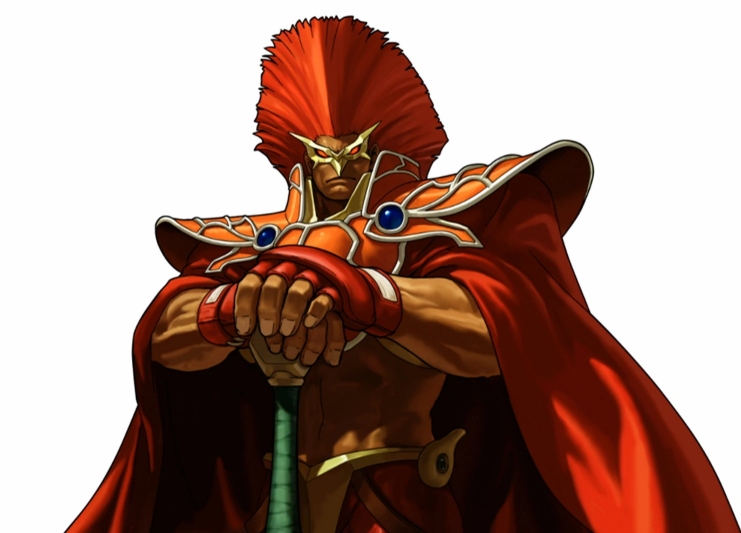
13. KING LEO/TRUE KING LION
Savage Reign
A lot of times in fiction, futuristic designs are based on the decade when they were conceived. That’s how we got King Leo, a villainous champion in the future of the Fatal Fury/Art of Fighting timeline, who looks hilariously try-hard ‘90s. The angular mask/boots/codpiece combo, the boxing gloves with sword, the ridiculous flat-top mullet, the cap, the ab window, etc. He has it all. He is pure extreme.
In both Savage Reign and its sequel Kizuna Encounter, he’s playable but not really. King Lion is selectable from the beginning, but it becomes apparent that he and the final boss are two different entities. Playable King Lion is an impostor meant to test the challengers, while King Leo is the far more powerful real deal.
Even when Jyazu appears in Kizuna Encounter as the actual final boss by impaling King Leo with his giant sword, King Leo is still able to later shrug off that major wound in a post-credits sequence. God, I wish that game had a follow-up.
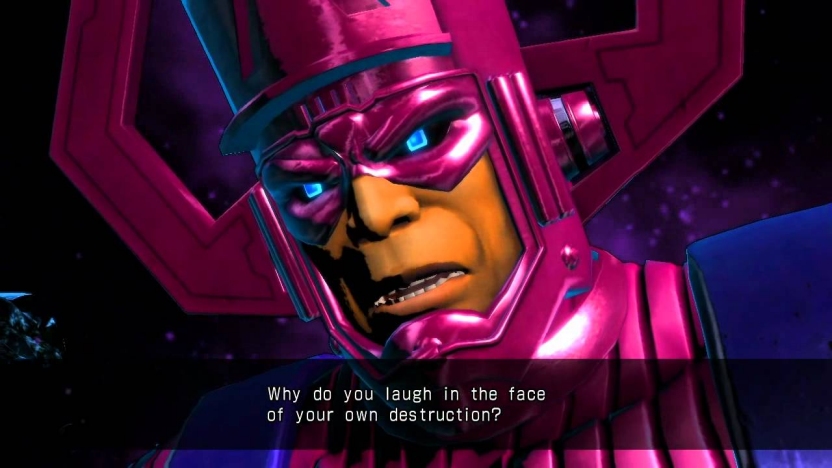
12. GALACTUS
Marvel vs. Capcom 3
I’m surprised it took Capcom so long to bring in Galactus. The studio had the giant boss thing going in its Marvel games with Apocalypse, Onslaught, and whatever the hell Abyss was, and probably should have gone with Galactus for Marvel vs. Capcom 2, but I guess Capcom wanted to do multiple forms for the battle and that’s what Abyss brought to the table. Fortunately, Marvel vs. Capcom 3 finally brought in the Eater of Worlds.
Galactus isn’t the kind of guy who is supposed to get taken down by Ryu and Wolverine, but considering Capcom made a Marvel fighter where Spider-Man can take down an omnipotent Thanos, and that there’s an in-story reason that Galactus isn’t at 100%, one can give this story a pass. He still fights like Galactus should with cosmic energy beams flying all over the place.
Probably the best thing about him is his silly appearances in various endings, like being put on trial with Phoenix Wright as his defense lawyer or an annoyed Wolverine telling X-23 to get Galactus’ defeated body off his lawn.
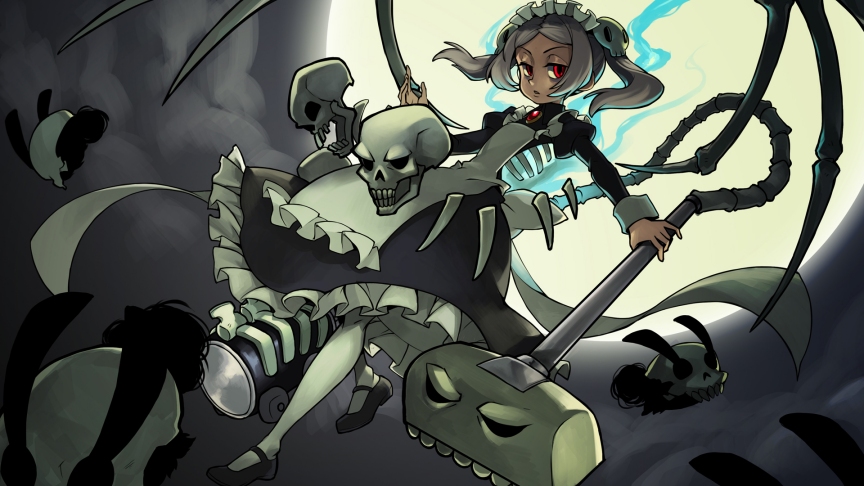
11. MARIE KORBEL
Skullgirls
The Skull Heart from Skullgirls is terrifying and interesting enough to build a fighting game story around. It’s a demonic relic powerful enough to grant you any wish you’d like, but it will possess you in time. How fast it possesses you depends on how selfish your wish is, but the sad fact is that no matter how altruistic or heroic your actions are, every wish is selfish on some level. To use the Skull Heart is to damn yourself and doom everyone else.
That’s the tragedy of Bloody Marie. She grew up an orphan, abused and treated as a slave. Her thirst for vengeance was justified, but it didn’t make a difference. As the all-powerful Skullgirl, it was only a matter of time before she lost herself completely and slaughtered everyone. This struggle translated to her appearance, which seemed normal enough…until you notice the glowing, bare ribs peeking out the side.
Marie has several forms, and each one depicts her as being less in control until she’s just scraps of bone being manipulated by the Skull Heart. Defeating her not only means wiping out a young girl who really doesn’t deserve it, but for some of her challengers, it means they’re walking towards their own tragedy with the Skull Heart.
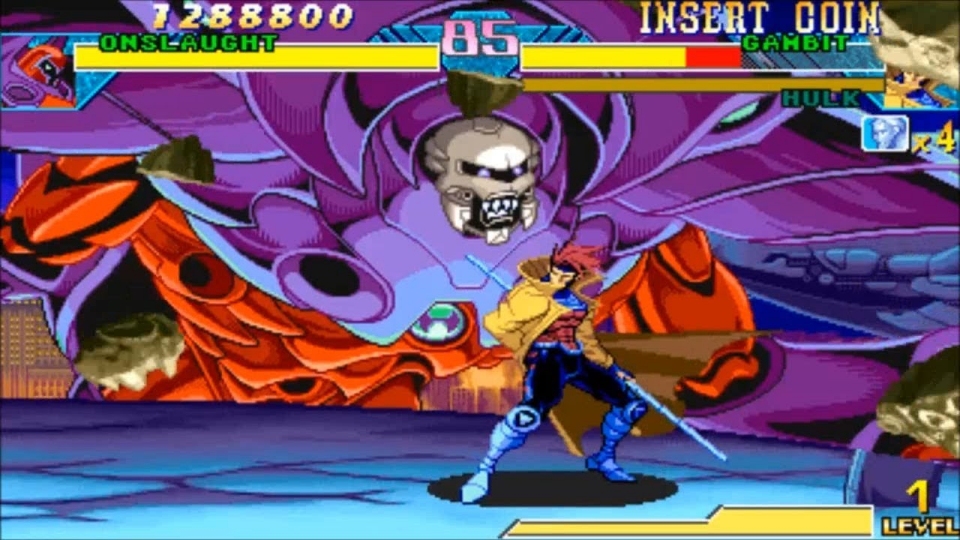
10. ONSLAUGHT
Marvel vs. Capcom
Capcom pulled off a miracle when it made Onslaught cool.
In general, Onslaught is like the Star Wars prequels. A solid idea in bullet points, but terrible in practice. The idea of an insane Xavier/Magneto/Juggernaut hybrid commandeering all the Sentinels and becoming such a threat to the Marvel heroes that the only way to stop him is to send a purified version of the Hulk after him sounds so awesome, but…well, ‘90s comics are ‘90s comics.
Marvel vs. Capcom’s Onslaught makes for such a sweet boss fight and is a big improvement over Apocalypse, who bypassed the normal-sized battle for the sake of immediately turning giant. Onslaught is Magneto on steroids, who turns into Apocalypse on steroids, and works because ‘90s Capcom was so damn untouchable.
We’re at a point in pop culture where War Machine is a mainstream superhero and “Lethal Protector” Venom made more in the box office than the Justice League. Onslaught is still considered a very specific time capsule that’s yet to be redeemed, which makes Capcom’s use of him here that much more impressive.
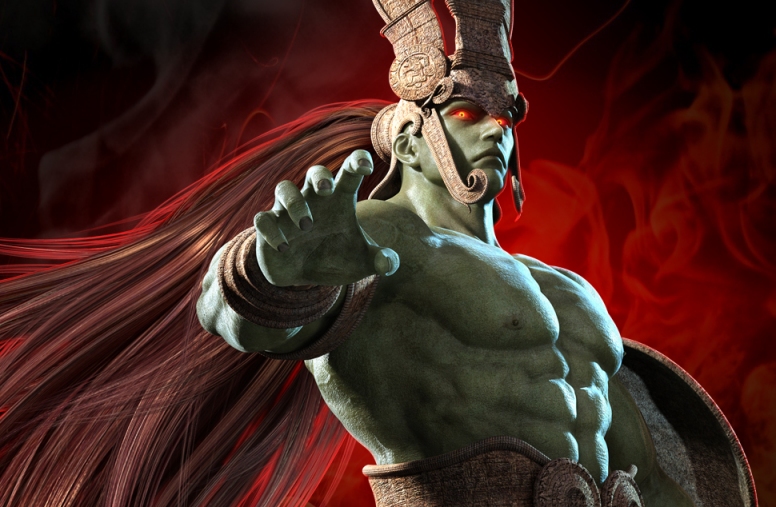
9. OGRE
Tekken 3
Tekken is like WWE where it’s so much better when isn’t focusing on the old man running things and his shitty family. When the bosses aren’t part of the Mishima bloodline, they’re usually some kind of unearthly being. You have your Egyptian demigod, you have your goth lady wearing sludge overalls, and you have your Aztec God of Fighting.
Ogre is the one Tekken boss who doesn’t directly tie into the Mishima family. It’s refreshing and makes the whole world feel bigger. He’s a completely unrelated force who reveals himself by beating the crap out of different mainstays in between Tekken 2 and 3. Granted, it was more impressive early on because Ogre got credit for wiping out so much of the early cast. But those guys returned in later games, and it seems Ogre only really killed the first King and MAYBE Jun, who sucks so good for Ogre.
Outside of non-canon stuff, Ogre didn’t last long in the Tekken series, but his death brought forth the rivalry between Heihachi and Jin, springboarding the Mishima war into a new direction. It was also explained that the Ancient Ogre form was defeated by Paul Phoenix, which is sadly one of the last times that character was treated like an actual threat.
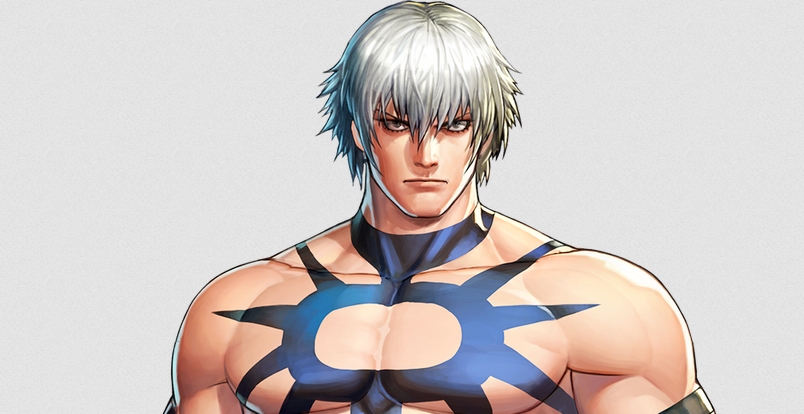
8. OROCHI
King of Fighters ’97
Nailing the landing on a long-running story isn’t easy, and it’s truly impressive when a franchise pulls it off. Fans of Avengers: Endgame know that feeling well.
While the first King of Fighters game was all about Rugal, his return in King of Fighters ’95 built on the idea that he was tapped into a greater power that dwarfed him. Then King of Fighters ’96 continued that by showing us Goenitz, who was also a player in Orochi’s game. Even Iori Yagami – an antihero who wanted nothing to do with the evil god – was powerless to be anything but its bloodthirsty pawn.
King of Fighters ’97 not only acted as the climax to this whole saga, but it really felt like the peak of the whole franchise. There were great King of Fighters games afterwards, but this was where everything really felt like it lined up. And so, after all this build up, we got a team of Orochi worshippers, two insane pawns slaughtering in his name, and one guy so insane and bloodthirsty to start with that he shrugged off the magical need to go feral. Then by the time you got to Orochi, he felt like a true final boss that they spent several years building towards. He was the right level of malevolent celestial being and, while challenging, was never too hard compared to other SNK bosses.
As the exclamation point, most endings in the game warned that he’d be back someday. The only way to truly do away with him was to beat the game with a very specific trio of fighters, which happened to trigger one of the coolest endings in the series. The following arcs of King of Fighters would try to build towards other masterminds, but none of them held a candle to Orochi.
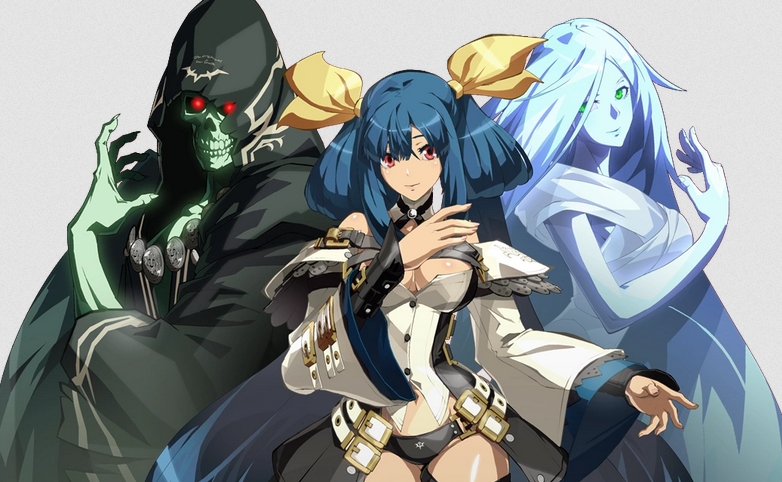
7. DIZZY
Guilty Gear X
As I said earlier, the true conflict of the Guilty Gear series is that shit was bad long ago, and the heroes have to keep the world from unwinding back into that chaos. When it came to the villainous Justice, things were pretty cut and dry. Justice had been released from her prison, cloned, and even resurrected at times. But Dizzy was a deeper take on the idea. She is the daughter of Sol Badguy and/or Justice and is an omega-level threat who could very well relaunch the war between humans and Gears.
It just so happens that she’s also an innocent, young woman who just wants a peaceful existence, someone who just wants to be left alone where she can’t hurt anyone. Despite being possibly the most powerful character in the series (give her Instant Kill attack in Guilty Gear Xrd a look), Dizzy is left alone in the end. She ends up finding friends, love, and even has a son.
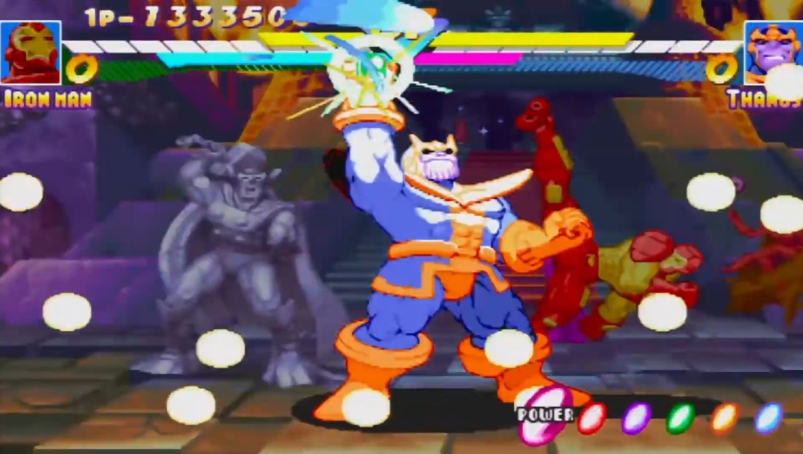
6. THANOS
Marvel Super Heroes
Marvel Super Heroes is a very loose adaptation of Infinity Gauntlet, and that’s part of the reason the final battle with Thanos work so well. You spend all game accumulating Infinity Gems, adding more power-up options to each fight. Then Thanos steals them away and you have to take on a fully-Gauntleted Mad Titan in front of a backdrop very reminiscent of the big heroes vs. Thanos fight from Infinity Gauntlet.
Now, for those of you who haven’t read the comic that inspired Avengers: Infinity War, Thanos got the Infinity Gauntlet and became omnipotent. A bunch of heroes dogpiled him, and Thanos even gave himself a handicap to make it the slightest bit challenging, but the heroes still lost BADLY.
So here you are, playing as Spider-Man or Iron Man or whoever, having to have a kickass one-on-one brawl with Thanos and having to do alone what almost 20 superheroes couldn’t do in the comics. But because fighting games exist in a reality where everyone can win (and not just Jim Starlin’s Jim darlings), everyone — from Psylocke to Juggernaut — stands a chance at dethroning Thanos and truly earning the Infinity Gauntlet.
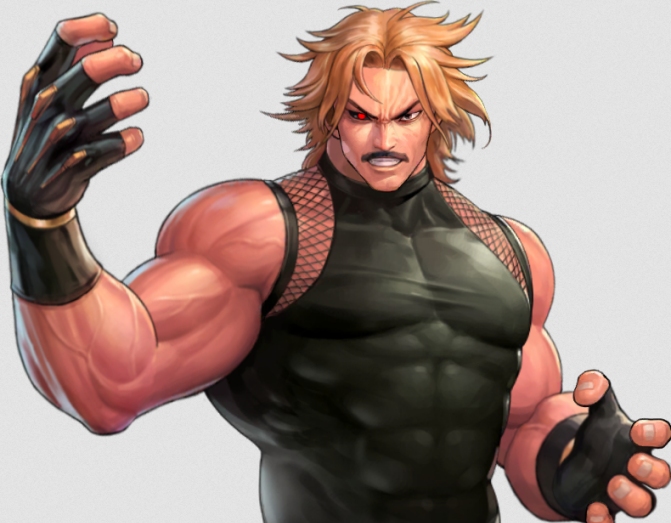
5. RUGAL BERNSTEIN
King of Fighters Series
I’m a huge fan of this character despite his tendency to be a bullshit SNK boss. Fighting him in King of Fighters ’94 should be banned by the Geneva Convention. It’s just that…man, the dude has so much swagger and radiates such coolness that I can’t hate him. He’s Rugal Goddamn Bernstein and we’re better for knowing him.
As with most early villains of fighting games, Rugal is overshadowed by his replacements. Shang Tsung works for Shao Kahn. Sagat works for M. Bison. Heihachi is the son of Jinpachi. Eyedol is the rival of Gargos. Geese is the weaker brother to Krauser. Rugal got the ball rolling in his own way as a way to build to the Orochi storyline, which practically defined all the following King of Fighters storylines. Yet in the end, despite being the first step in the saga and being killed for good during the second entry, Rugal has solidified himself as THE villain of King of Fighters. Dream match games and non-canon adventures tend to just go with Rugal as the final boss by default, usually with some extra bell and whistle, my favorite being God Rugal from Capcom vs. SNK 2. A coked up Rugal with Akuma gimmicks is my kind of boss battle.
Rugal is mostly a collection of awesome motifs and special attacks, but I also love that he’s just as defined by his number one weakness. Yes, he’s good enough to crush a team of three like nobody’s business, but he has his physical limits and his downfall is that he doesn’t see that. In canon and as God Rugal, he loses because he absorbs and uses up too much power for his body to handle. It’s nice when a villain is done in by their inability to leave well enough alone.
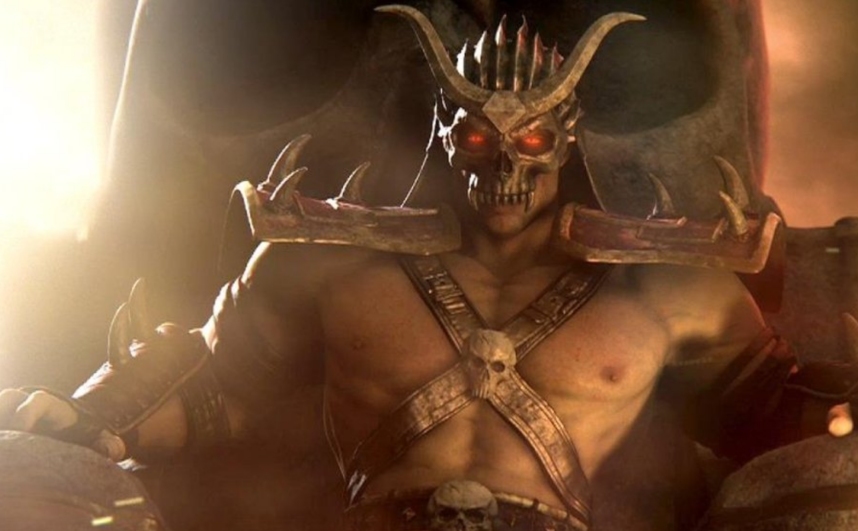
4. SHAO KAHN
Mortal Kombat Series
The worst thing I can say about Shao Kahn is that, while I dig the way his latter appearances lean into his “painted on the side of your van” metal design, he will never be as completely rad as he was in Mortal Kombat 2 and 3. Probably because loud growling doesn’t hold a candle to his eerie whisper and proud laughter.
Kahn is more intimidating than most bosses. The attract sequence in Mortal Kombat 2 showed a silhouette of Kahn reading Shang Tsung the riot act followed by a more direct look at his appearance, and it was immediately clear that this guy was absolute trouble. The first game tried to make Goro seem terrifying, but we knew that he was still second to Shang Tsung. Shao Kahn was THE boss, and we knew that, even if we climbed up that ladder (with Kahn STANDING ON TOP A MOUNTAIN), Kahn would be the end of us.
And a lot of the time he was. He would beat you with a war hammer, kick you across the room, and taunt you and you’d love him for it. He was so perfect as a boss that Midway simply had to bring him back for the next game.
Even after taking a backseat in the subsequent games, Mortal Kombat Armageddon’s story revitalized him by making him the winner of what was essentially the Mortal Kombat Royal Rumble. It was such a tragic turn of events that Raiden had to go back in time to stop it. Even with nearly all the good guys dead, it was all deemed worth it just because Kahn was killed. At least for a few years.
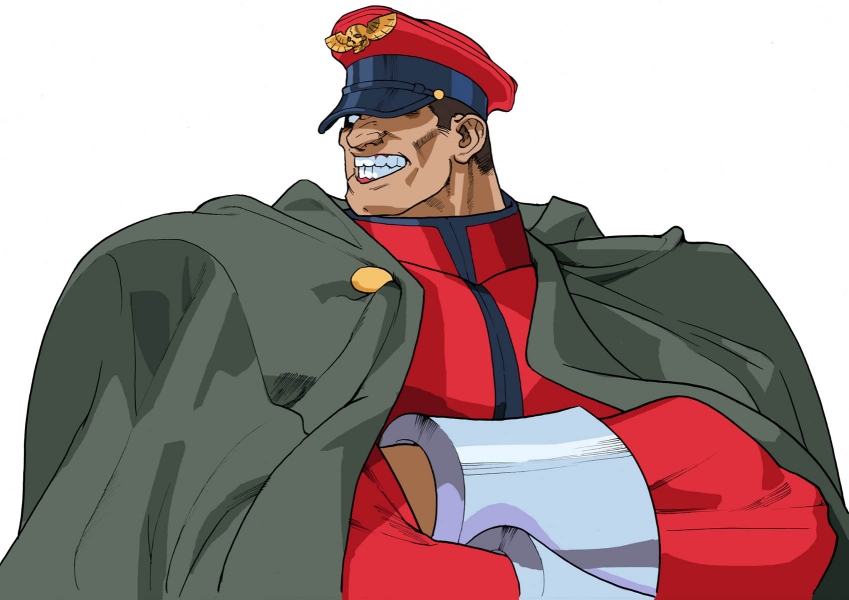
3. M. BISON
Street Fighter Series
As a kid, I was always confused about why this bus driver was running his own fighting tournament, but that feeling was replaced by my rage at his damn slide kick and arm-hook throw combo. You have fire-hand powers. You don’t need to be that smooth, dude.
Bison isn’t as deep a character as Sagat or as hardcore as Akuma or as naked as Gill, but he is possibly the hammiest final boss in the history of fighting games. All the various actors who have portrayed the character seem to be taken by the infectious fun that comes with playing him, whether it’s Raul Julia in the first live-action movie, Gerald C. Rivers and Kenji Utsumi in the games, Richard Newman on the cartoon, and, hell, even Neal McDonough had his moments in that crappy Chun-Li movie.
As the first final boss that anyone ever cared about, Bison is a wonderful pile of escalating craziness. Over time, he’s become a comedically-jacked guy with a constant smile whose plots involve Buddha statues with laser faces, running over Ryu with a bigass truck, shoving his soul into gender-swapped clones, and dropping satellites onto civilization for the sake of causing chaos. Capcom can try to write him out of the series, but he’s just too iconic to destroy for good.
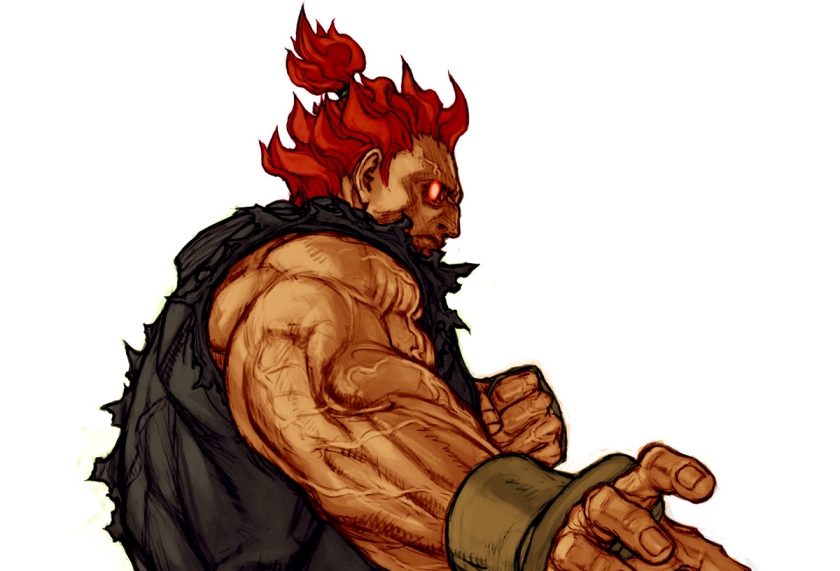
2. AKUMA
Street Fighter Series
It’s crazy to think how Electronic Gaming Monthly did an April Fools’ joke about there being an enhanced version of Ryu as a secret final boss in Street Fighter II and Capcom decided, yes, that’ll do. That’s how one of the most iconic fighting game characters ever was born.
“Ryu but darker and more powerful” could have ended badly, but Akuma’s always shined as the X-factor of Street Fighter’s roster. He’s more than just an evil final boss. He’s a malevolent force that is somehow neither good nor evil…which is for the best, considering Capcom eventually labeled M. Bison as literal pure evil.
What’s funny to me is how Mortal Kombat introduced the idea of the hidden boss fight with Reptile, then gradually turned him into the biggest jobber in Mortal Kombat lore. Akuma showed up, wiped out M. Bison with his so-powerful-we-can’t-even-show-you super move, gave you a nigh-impossible boss fight, and then Capcom made sure to keep him going as the guy who will make you shit your pants every time he shows up. When SNK made its SNK vs. Capcom crossover game, the team even put an ending in there where a bored Akuma challenged God to a fight.
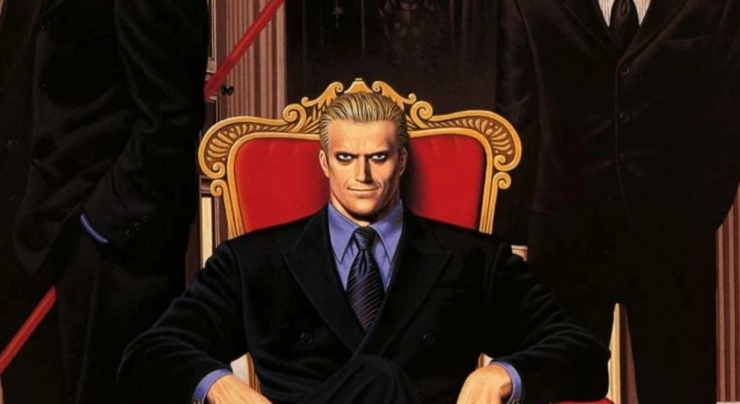
1. GEESE HOWARD
Fatal Fury Series
As fighting games are ensemble pieces, so are their storylines most of the time. Fatal Fury, not so much. Fatal Fury is really the story of Terry Bogard vs. Geese Howard with a bunch of supporting characters. Even Andy Bogard, who has just as much a reason to be the protagonist as Terry, is relegated to being “the guy who is reluctant to sleep with his hot girlfriend.” Fatal Fury is really about Terry and Geese and everyone else is, at best, an extension of the two of them.
Geese is everything you could ever want in a final boss, unless you’re looking for a giant shooting lasers out his eyes. He’s slick as oil and tougher than brick, with a moveset that’s based around throwing you like a ragdoll or blasting you into the stratosphere. He’s the right balance of difficult enough to make you curse, but not cheap enough to make you throw the controller through your screen.
Not only is he unique in battle, but he just has so much personality. His cockiness is on another level. His every gesture makes him look like he knows he’s superior to everyone else in every way, but kicking their ass is a better use of his time than whatever else he has planned. Even his counter moves (“PREDICTABLE!”) make him seem untouchable.
His canon death scene in the Fatal Fury games is also second to none. Hanging off a tower rooftop, he sees Terry reach his hand out. Rather than be saved and maybe even forgiven by Terry, Geese chooses to smack it away, let go, and fall to his death while looking up at the winner and laughing maniacally at him. What a boss way to go.
